WHAT IS A POCKET BULLY? MICRO VS POCKET, STANDARD, CLASSIC, XL & THE EXOTIC BULLY


What is a “Pocket” American Bully? And what is the difference between a Micro, Pocket, Standard and XL American Bully? What is an Exotic Bully?
With so many different types of and terms used to describe a single breed — searching for an American Bully puppy can be a daunting task — especially so for those who are new to the breed. With so many choices and options, where should you begin?

Venomline Pocket American Bully Puppies
Deciding on the type of American or Exotic bully that best suits you is an important decision. Far too often — buyer’s will make impulsive decisions without gathering all of the facts — only to end up regretting the decision later.
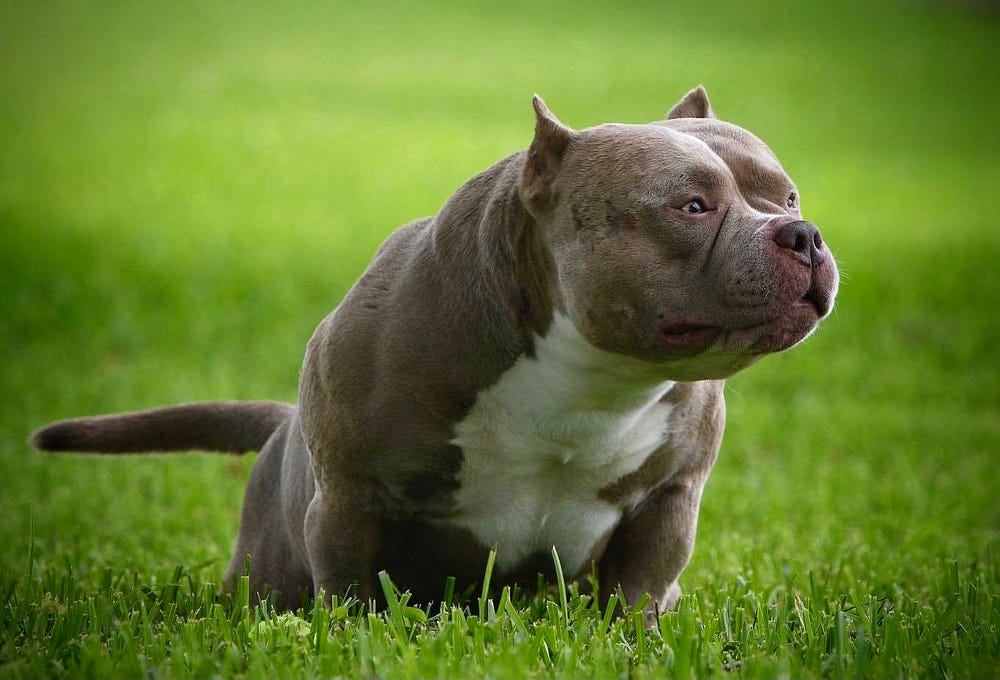
Louis V Line’s Venom
Often, first time buyers will rush out and make a purchase only to end up spending several thousand dollars on food & supplements over the course of their dog’s life in an attempt to achieve a desired build that just isn’t possible if it isn’t in the dog’s genetic makeup. Money that could’ve been spent up front on quality stock.
But, if you take the time to arm yourself with facts and educate yourself on the various types and terms used to describe the American Bully before making a purchase, chances are — you’ll start with the type or class that best suits your individual needs or preference.
THE DIFFERENT TYPES, VARIETIES, CLASSES & SIZES OF THE AMERICAN BULLY BREED
POCKET, STANDARD, CLASSIC, XL, MICRO & THE EXOTIC BULLY
In this article, we’ll cover the 4 American Bully Classes according to the American Bully breed’s founding registry — the ABKC. We will also shed light on some of the different terms used to describe the “other” types of American Bully and Exotic Bully’s. Terms like Nano, Micro, Teacup, Extreme, XXL & the latest fad “Merle” bullies.
THE AMERICAN BULLY CLASSES (VARIETIES)
For those who may be new to the breed and still learning, let’s take a look at the different Classes in the American Bully breed according to the founding registry — The American Bully Kennel Club, also known as the ABKC Registry as well as the United Kennel Club, referred to as the UKC.
AMERICAN BULLY (ORIGINAL) CLASSES
POCKET, CLASSIC, STANDARD, EXTREME & XL
It is important to note the ABKC got rid of the extreme class — initially a handicap allowed in the developmental stages of the American Bully in it’s infancy.
This was because there was a huge amount of these dogs in the breed’s gene pool base and from a large bloodline within the breed; which was one of the founding bloodlines to be exact. The reason for the leniency is these were bigger heavier dogs that needed more time of development to achieve ideal conformation.
The “handicaps” were designed to be eliminated over time until this variety met the same standards as the Standard.
THE AMERICAN BULLY “EXTREME” CLASS
In the earlier ABKC days, “Extreme” was a variety/class that dogs could show, compete and earn Champion Titles in. But, a few years back the ABKC announced that it was getting rid of the Extreme Class.
There were many that misunderstood this action — making the assumption that this was due to the fact that the ABKC did not want “Extreme” dogs. But the truth of the matter was the exact opposite.
The American Bully muscular body and blocky head. The American Bully should have the appearance of heavy bone structure with a bulky build and look.
From the American Bully Kennel Club (ABKC):
The American Bully is a young breed and still in its development phase. When a registry takes on a new breed the first stage is obviously to create a criterion of the requirements to be eligible to register as the brood stock of this breed.
The “Extreme” Variety was the same as the standard overall, but carrying more mass. This variety was initially allowed some of what they refer to, as “handicaps” meaning there was some leniency to certain traits beyond the standard. The reason for the leniency is that there were bigger heavier dogs that needed more time of development in order to achieve ideal conformation. The “handicaps” were designed to be eliminated over time until this variety met the same standards as the standard.
AMERICAN BULLY CLASSES
(2014-PRESENT)
There are currently 4 Classes/Varieties in the American Bully breed as determined by adult height. The “Extreme” which was initially allowed as a “handicap” is no longer an official Variety or class in the American Bully breed, as they are supposed to carry “type.” Meaning, that it should be easily distinguishable from similar breeds, and at first glance — be identifiable as an American Bully.
The American Bully should stand apart from — and should not confused with similar breed’s in it’s ancestry — like the American Pit Bull Terrier, Staffordshire Terrior and various Bulldog breeds.
Standard and Pocket are now not to be penalized for dogs carrying more mass as long as they are correct and balanced.
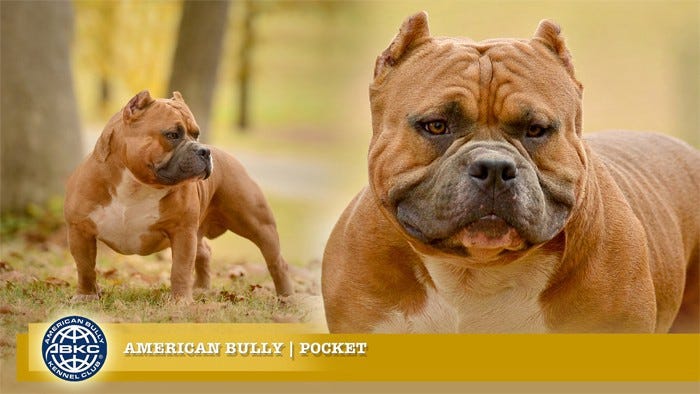
This is an amendment to the basic standard which a Pocket Bully is determined by its adult height.
Males under 17″ and no less than 14″ at the withers. Females under 16″ and no less than 13″ at the withers.

STANDARD
The American Bully should give the impression of great strength for it’s size. It is a compact and medium/large size dog with a muscular body and blocky head. The American Bully should have the appearance of heavy bone structure with a bulky build and look.
Males 17 inches — 20 inches (43 cm — 51 cm) at the withers. Females 16 inches — 19 inches (40 cm — 48 cm) at the withers.
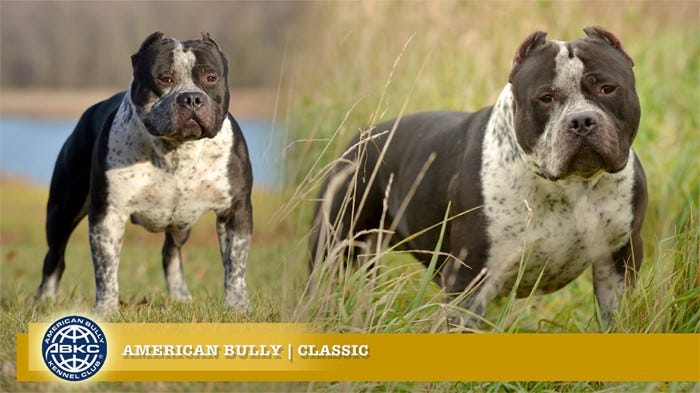
CLASSIC
This is an amendment to the basic standard. A Classic Bully is determined by it’s body structure and build. Both sex dogs with lighter body frames and less overall body mass, but still exibiting “bully” traits.
The Classic Bully variety is simply an American Bully dog having lighter body frames (lighter bone) and less overall body mass (less substance) than the Standard American Bully.
Aside from this difference, the Classic Bully variety follows the same standard as the Standard American Bully.
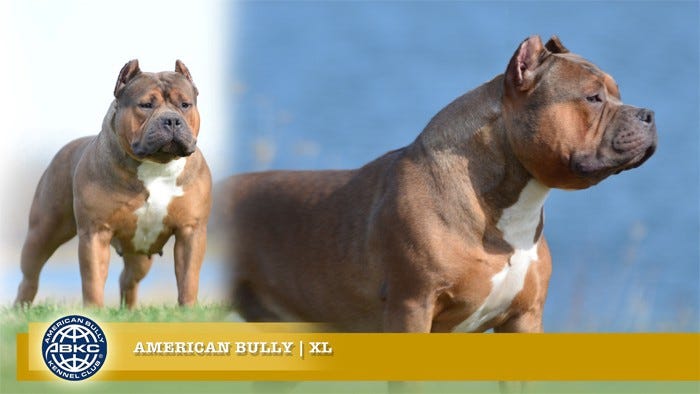
XL
This is an amendment to the basic standard, determined by it’s adult height. It is important to note that the XL Bully variety is simply taller than the Standard American Bully. XL dogs share the same build, body type and breed type as the Standard American Bully.
Males over 20″-23″ at the withers. Females over 19″-22″ at the withers.
THE EXOTIC BULLY

The Exotic Bully is a newer designer dog breed that began to distance itself from the American Bully as early as 2008. It has established itself as a separate breed from it’s cousin — the American Bully, and is still a controversial topic with much needed breed standards.
One of the few descriptions or characteristics of an Exotic Bully that almost everyone involved with the breed can seem to agree on are “exaggerated features on a smaller, more compact dog,” described as carrying more “bulldog features.”
The foundation of most of the “exotic bully’s” of today can be attributed to the American Bully being bred with various types of smaller bulldog breeds including but not limited to: French Bulldogs, English Bulldogs and Shorty Bulls.
The Exotic bully (as a whole) is known for being littered with health, heart & joint issues, have terrible conformation and extremely short life spans.
PHOTOSHOP AMONG EXOTIC BULLY BREEDERS
Photoshop runs rampant in the Exotic bully world, so be careful. If this is your desired type of bully — go and see the dogs in person before deciding to make a purchase. To be frank, the Exotic bully (as a whole) is an absolute disaster.
For this class of dog to ever have any longevity, or to be taken seriously — it desperately needs a breed standard, a Registry and Judges that hold exotic breeders accountable, and Judges that have a basic understanding of dog anatomy.
It’s difficult for real dogmen and women to respect breeders responsible for dogs that have to be carted around in strollers and sat up on a tables (as most can’t physically walk the show ring) and end up dead before the age of 3. That’s all we’ll say about this topic, as we don’t want to offend anyone further. But it’s the blind leading the blind.
This isn’t to say there aren’t any nice exotic bullies, because there are. But the are few and far between. But, with a little research you can find Micro & Pocket American Bullies as short or shorter, more compact, with more bone, better head, neck and shoulders— on a complete dog — from head to rear.
One that is functional, has a longer lifespan and doesn’t come with nearly as many health issues.
THE MERLE BULLY
Although they have been popping up on social media as “rare colored” American and Exotic Bullies — the Merle color coat has no place in the American Bully breed. Merle is a fad. It will pass, just like all the other fads that have crept into the American Bully breed only to disappear later on.
I’d be lying if I said that the first generation (1st litter: Merle to a non-Merle) weren’t beautiful dogs, because they are.
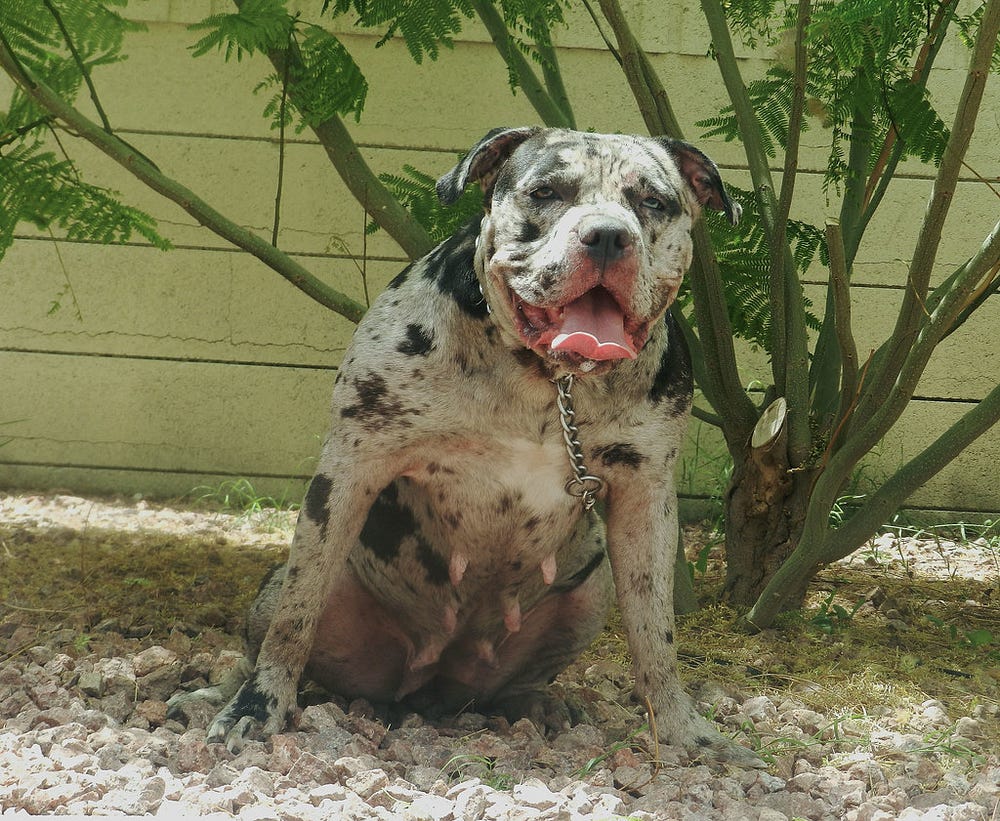
But what a lot of less experienced breeders don’t realize — is that in 3–4 generations — they’re going to be stuck with a yard full of black and white dogs that nobody wants.
They won’t be able to give away for free, let alone sell them. And that’s not even getting into the health issues.
Read: Is the Merle Coat acceptable in the American Bully breed?
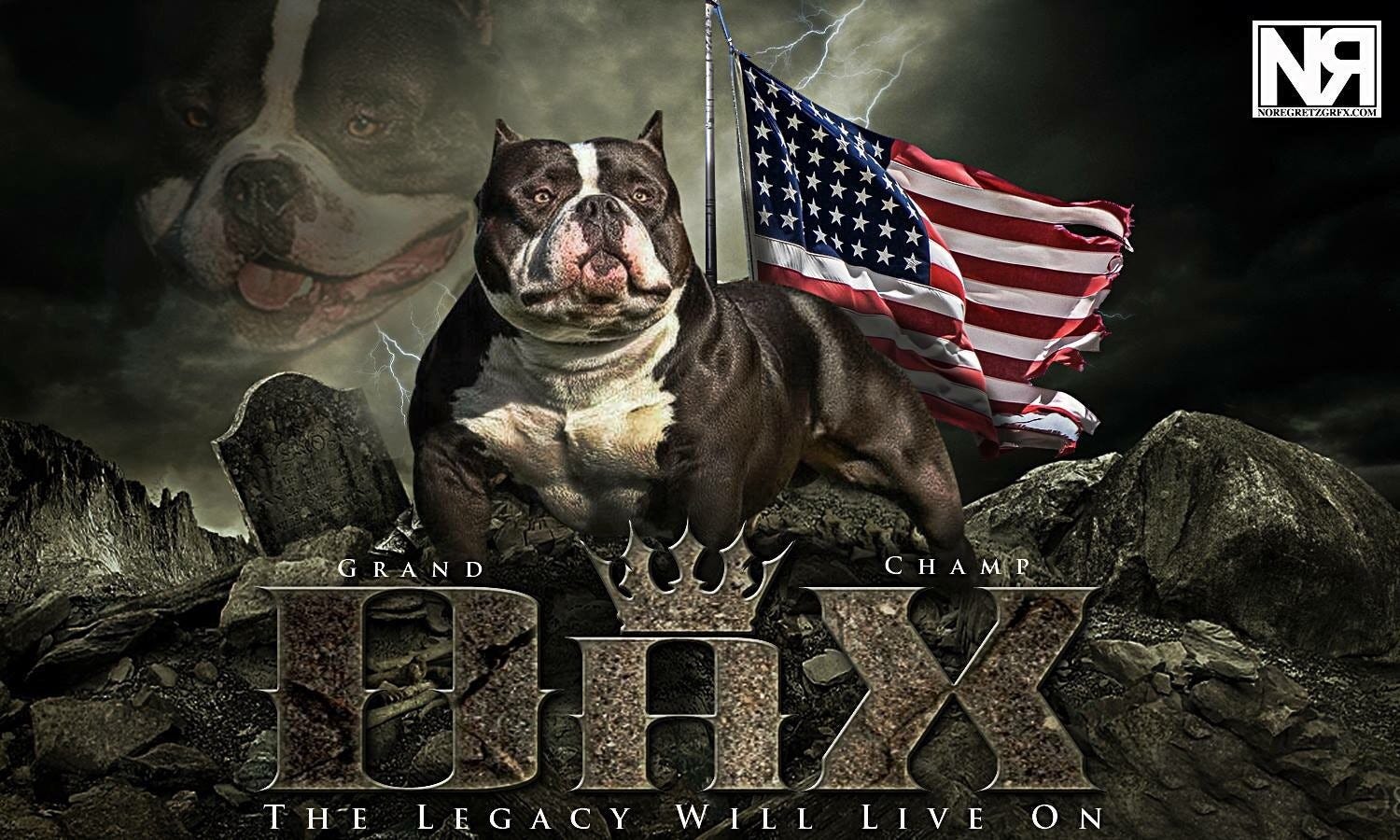
Now that you have a basic understanding of the different classes within the American Bully breed, let’s take a look at how this relatively new breed went from virtually unknown — to top of the list for “fastest growing new breed” each of the past five years. Let’s revisit how it all began.
See: Everything You Need To Know About The Fastest Growing Dog Breed: The American Bully
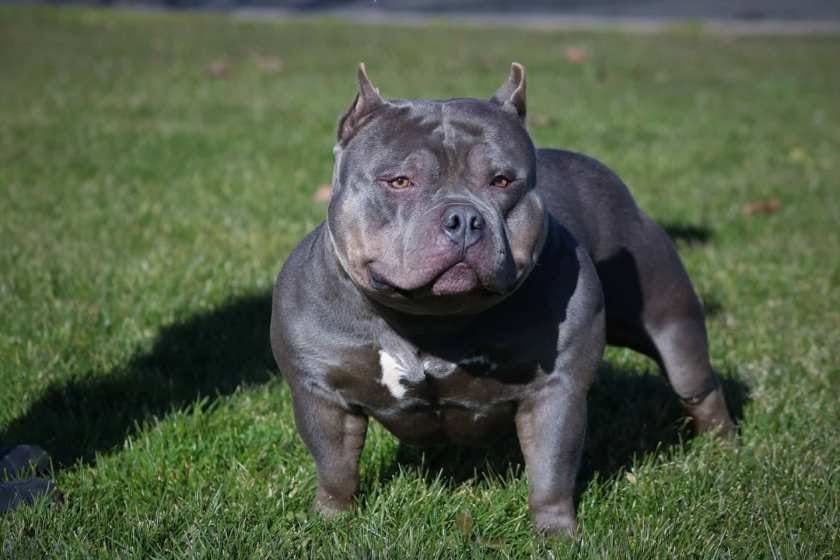
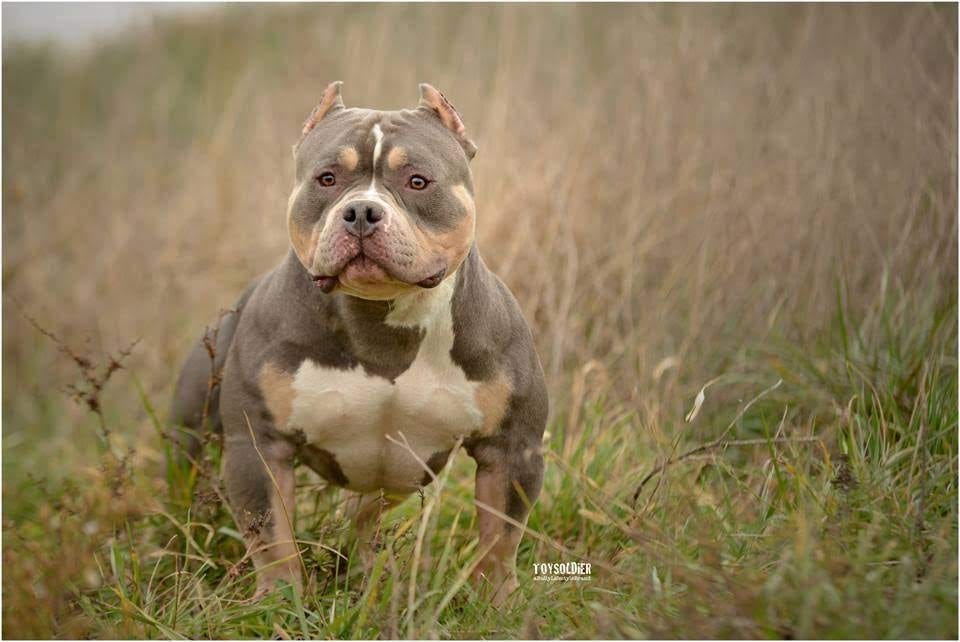
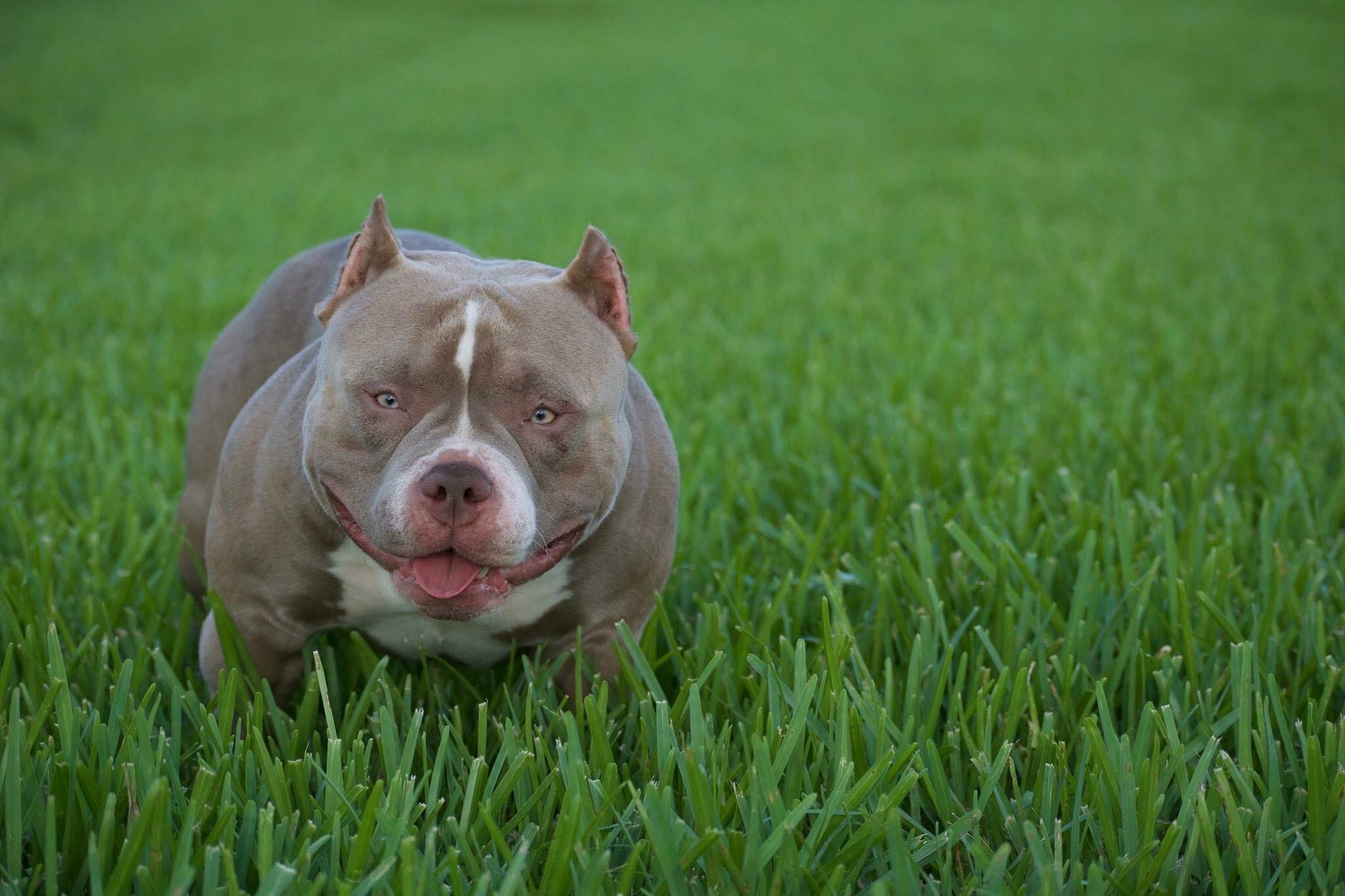
HISTORY OF THE AMERICAN BULLY
The American Bully breed was created around 1990 and gained recognition and establishment in 2004 with the inception of the American Bully Kennel Club, also known as the ABKC Registry.
The United Kennel Club or UKC recognized the American Bully breed in 2013. There are other registries, but for the purposes of this article we will mention the main few- which are the ABKC, BBCR. BRC Global and the UKC.
According to the ABKC- The American Bully breed has been selectively bred to give America’s breed, the American Pit Bull Terrier, a new direction and outlet. Like with the American Staffordshire Terrier (which is also an offshoot of the American Pit Bull Terrier) all of the positive characteristics of the breed’s ancestry were kept — these Include loyalty, stability with humans and children, along with many of their physical attributes.
Traits of dog and human aggression have been bred out, as they have no future purpose for this trait (outside of hunting & sport) A reinvented breed was formed, with the purpose of being the ultimate companion breed, and this breed is the “American Bully.”
According to the UKC — The American Bully breed was subtly influenced by the infusion of several other breeds which include the American Bulldog, English Bulldog, Pacific Bulldog as well as the Olde English Bulldogge among other Bulldog breeds.
What differentiates the American Bully breed from it’s ancestors — the American Staffordshire Terrier and the American Pit Bull Terrier (aside from it’s genetic makeup) is the dog’s physical appearance.
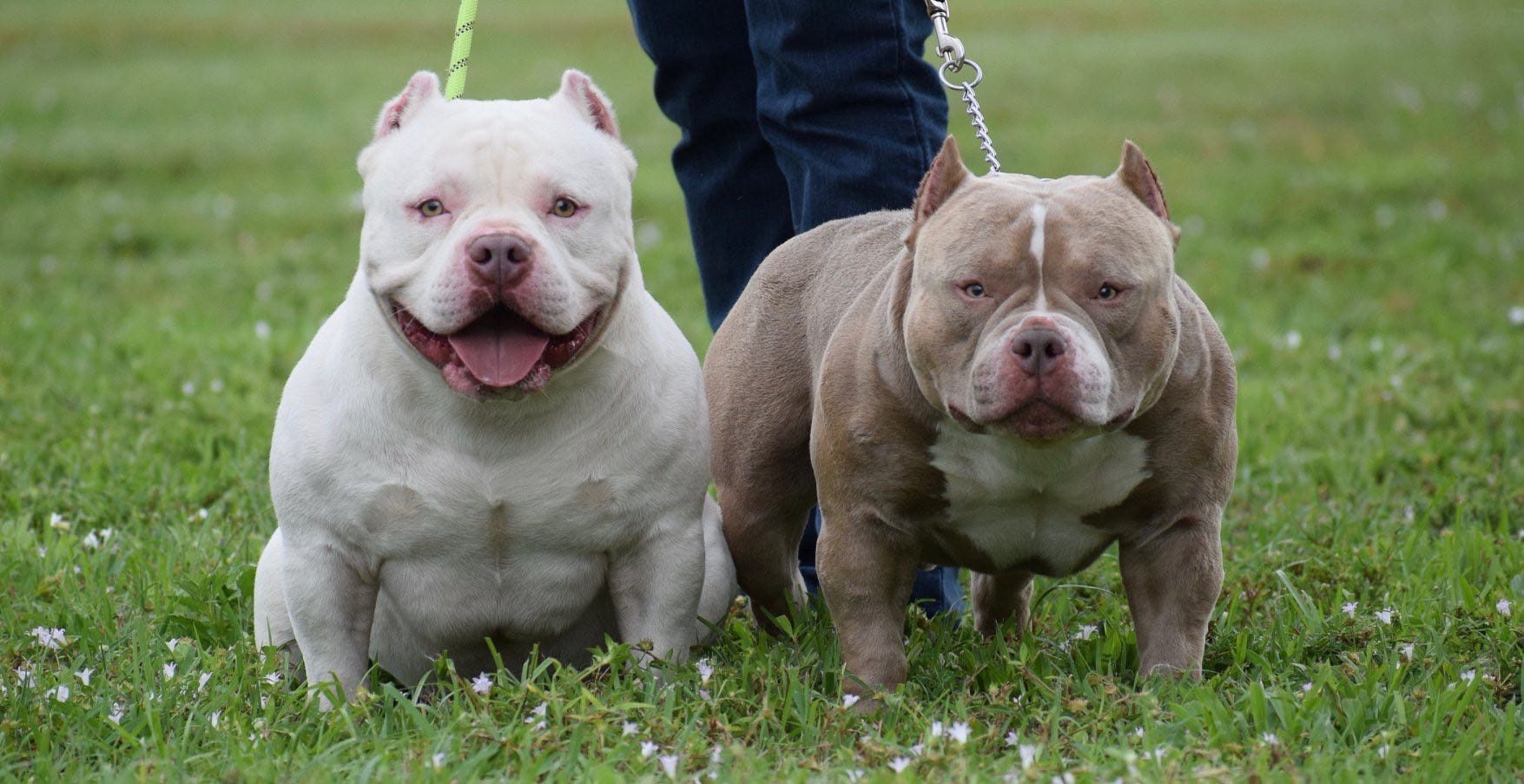
Top Pocket Bully Studs | Louis V Line’s Venom & Omega
The American Bully Breed is one of heavier bone structure and “bullier” build than it’s American Pit Bull Terrier and Staffordshire Terrier ancestors, but without many of the health issues prevalent in many of the breed’s Bulldog ancestry.
Read: History Of The American Pit Bull Terrier & The Evolution Of The American Bully
THE PERFECT COMPANION BREED
To many people, it’s the perfect blend. A companion breed without the heightened game drive of an American Pit Bull Terrier, yet more active and without as many of the health issues found in many of the Bulldog breeds in it’s makeup. The result?
A calm, confident breed of dog with a statuesque build a bodybuilder’s physique. Despite the American Bully’s fierce and powerful appearance, their demeanor is gentle, making the American Bully an excellent family companion.
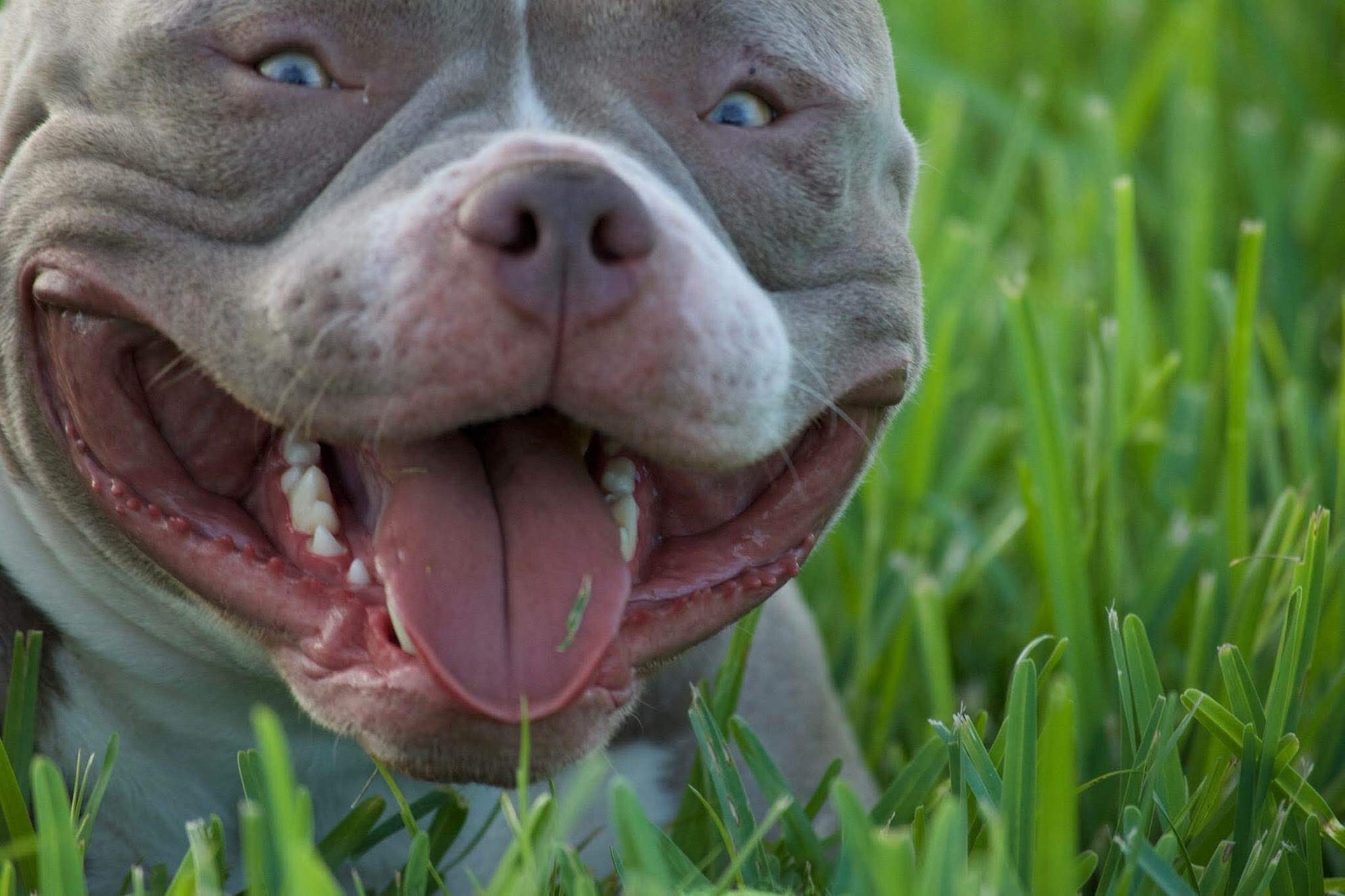
A breed that’s become known for its fun, silly and goofy personality, a zest for life and an exuberant will to please their master. American Bullies are friendly with strangers, other dogs and most other animals.
Human or dog aggression, extreme shyness or viciousness is very uncharacteristic of the American Bully and highly undesirable.
THE AMERICAN BULLY BREED’S RISE IN POPULARITY
The American Bully first became one of the fastest growing new breeds in 2014 and it has remained in the Top 5 every year since. In 2018, the American Bully breed became the fastest growing dog breed in terms of popularity and it hasn’t shown signs of slowing down since. The breed is on track to finish 2019 in similar fashion. So why are so many falling in love with this breed?
COMMON MISCONCEPTIONS ABOUT THE AMERICAN BULLY
Even with the American Bully breed’s explosive growth and expansion into new countries and territories, there is still much confusion about the breed made worse by several misconceptions and stereotypes. Inaccurate information online perpetuated by ill-informed media outlets have furthered misunderstandings regarding the breed.
There are still some who confuse the American Bully with it’s cousin — the American Pit Bull Terrier. Both are great breeds, and although they share similar linage and look — they distinct and separate breeds, recognized by several respected registries as such.
So, the American Bully breed has caught your attention, but there’s so many different types, bloodlines and classes to choose from. It can be a little overwhelming at first in deciding where to begin. For those who may be new to the breed or are first considering owning an American Bully — one of the first decisions to make is to decide on a class.
DECIDING ON A CLASS, SIZE OR TYPE

This is one of the first and often overlooked steps when deciding to purchase an American Bully puppy or adult. Ask yourself, what type of bully best suits your interest? Do you want something smaller or shorter?
In this case, you’ll probably want a Pocket Bully. Wanting something bigger? Then a Standard Bully might be a better fit. Interested in something even bigger or perhaps a small horse? A bully that’s over 100lbs and absolutely massive — then the XL class is probably for you.
WHAT IS YOUR GOAL?
Once you’ve decided which size you prefer, next ask yourself what is your goal? Are you simply interested in a pet, or are you considering having a litter or showing in conformation events (dog shows?) The answer to these questions will help you in deciding where to begin your search. They will also have a big effect on the price you can expect to pay.
If you’re simply looking for a pet, you can find one at much lower prices than if you’re looking for a show dog, stud or breeding stock. If you do plan on showing or breeding in the future, it often makes sense to pay for a higher quality dog than what you would be getting at pet prices.
AMERICAN BULLY PUPPY COST
HOW MUCH DOES AN AMERICAN BULLY COST? WHAT IS THE AVERAGE PRICE?
- Show Quality & Breeding Stock: $5000-$10,000+
- Pet Quality w/Registration Paperwork: $2500+
- Pets without papers: $2500-$1000
Again, these prices are just the average price you can expect to pay when buying an American Bully puppy. Prices can be well above or below this range depending on a variety of factors which we will discuss in detail below.
UNDERSTANDING PEDIGREES
Be sure to get detailed pedigree information on the dogs to ensure you are getting a quality linebred dog (meaning that the same ancestors appear more than once in the 4 generation pedigree) Linebred dogs usually produce more consistent litters.
Kennels that have been around for a while, that have quality productions to show and an idea about what they’re doing will usually linebreed.
PRODUCTIONS MATTER
There’s plenty of overnight breeders hyping up their litters as the best thing since sliced bread, but most don’t have the productions to back up the hype. Has the breeder produced any Champions or Grand Champions?
What Studs have they produced? Have the females that they’ve produced turn out to become quality breeding stock for other kennels?
How do some of the later picks on their litters turn out?
This will say a lot about the consistency of a breeding program.
Once you have purchased foundation females to build your program with, the next step is to decide on a Stud.
AMERICAN BULLY STUD SERVICE
DECIDING ON A STUD
Most breeders offer a stud service. If you are new to breeding dogs, you should take advantage of this.
Many that get started in the dog breeding business usually purchase a stud dog or two along with some female dogs. As Venomline discussed above, the better way of going about this is to start off by purchasing female dogs.
When they are ready to be bred you can contact kennels that offer stud service or contact the kennel you purchased the female from for use of their Studs. Housing, feeding, and taking care of male dogs can be expensive and even then you’re not guaranteed a great stud dog once they mature.
BENEFITS OF USING A STUD FROM A BREEDER RATHER THAN PURCHASING ONE YOURSELF:
1. Using a well known stud can help with litter sales
2. You can line breed your dog using the kennel that you purchased your female from. (Line breeding will produce more consistent litters)
3. You could end up waiting a year or two only to find out that the male that you purchased didn’t turn out to be a worthy stud dog. (Avoid this all together by using studs from a top breeder)
Many breeders will decide to breed their foundation female to a mediocre male (because that’s what they purchased) The outcome: usually a watered-down version of what was originally intended. Doing this can set a breeder back several years, whereas “grading up” (the breeding of females on hand to a male of higher quality) can be a shortcut to success.
A STUD VS A “PROVEN” PRODUCER… THERE IS A DIFFERENCE
Any male dog that produces semen has the ability to become a Stud. But, a Stud that is a “Proven Producer” is one that can out produce themselves on a consistent basis. They are the few with the ability to stamp their look with every litter. Top producing dogs are most often inbred or linebred from an outstanding bloodline.
Ever wondered why some studs seem to produce consistent litters almost every time out — while others show up on the scene with a ton of hype only to fizzle out a few months later — when the stud’s offspring never quite match the hype behind the Stud?
What is it that some Studs have that others don’t? Did the producing Stud owner get lucky? Sometimes. But the majority of the time — the Top Studs come from an experienced breeding program with an established track record of success. Programs that have a basic understanding of genetics and those who’ve put in the years and taken the time to educate themselves on various breeding methods and principles that worked well for others. The rest is learned through experience, successes and failures and trial and error.
In other words, breeders that know what they’re doing. Linebred and inbred Studs have a much higher chance at passing on traits than a scatterbred Stud dog. That’s just basic genetics.
See: Linebreeding, Inbreeding, Outcrossing & Advanced Breeding Methods in the American Bully Breed
VENOMLINE STUDS
Each of the Pocket American Bully Studs at Venomline are Linebred or Inbred for consistency, carry every color and all Tri Color variations. All of our Studs are DNA-Tested & Profiled and each of our Studs are health tested. There’s a reason our Studs’ litters are as consistent as they are— and why their litters look way they do.
LOUIS V LINE’S VENOM
LOUIS V LINE’S OMEGA
TLB/VENOMLINE’S KING V
VENOMLINE’S SAVAGE
VENOMLINE’S KING KOOPA
VENOMLINE FEMALES
THE FEMALES OF VENOMLINE
Venomline females are known for being some of the “bulliest” and most Extreme females on the planet. But what separates us from many other breeders are the females used as part of our breeding program.
It’s simple to use a top Stud, anyone can do that… but at Venomline, we know that it takes both a Top level Stud and a Top Level bitch to produce quality litters on a consistent basis.
QUALITY FEMALES ARE INTEGRAL TO A BREEDING PROGRAM’S SUCCESS
Females are integral to the success of any breeding program. Without using quality females to pair with Top Studs, litters more than likely just end up being a watered down version of what was initially intended.
Knowing this, our primary focus for the past 8 years has been to produce the best possible Pocket Bully Females to match up with our Top Tier Studs.
One thing that we never lost sight of as we added the dense bone, big blocky heads, muscular builds and Extreme features, is producing a complete dog. A lot of the “Extreme” American Bullies today, or at least many of the dogs being marketed as such.. are not what we would consider a complete American Bully.
ABKC CHAMPION VENOMLINE’S LIL TING
2X Venom (Venom X Moana)
ABKC CHAMPION DAWGHOUSE’S FURY
(Louis V Line’s Venom X Aww Sookie Sookie)
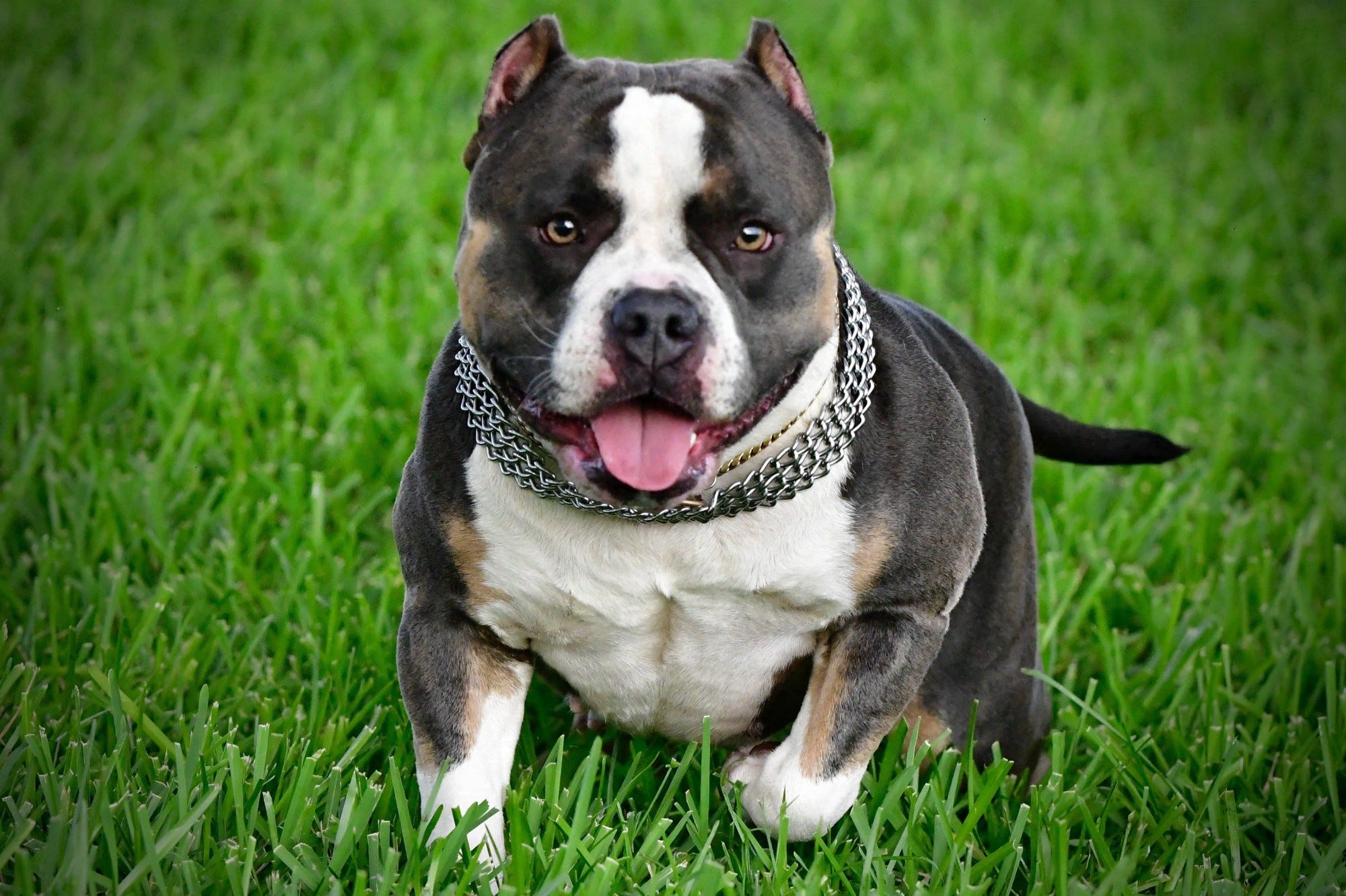
VENOMLINE’S SWIZZ
(GrCh Chumper X Panda)
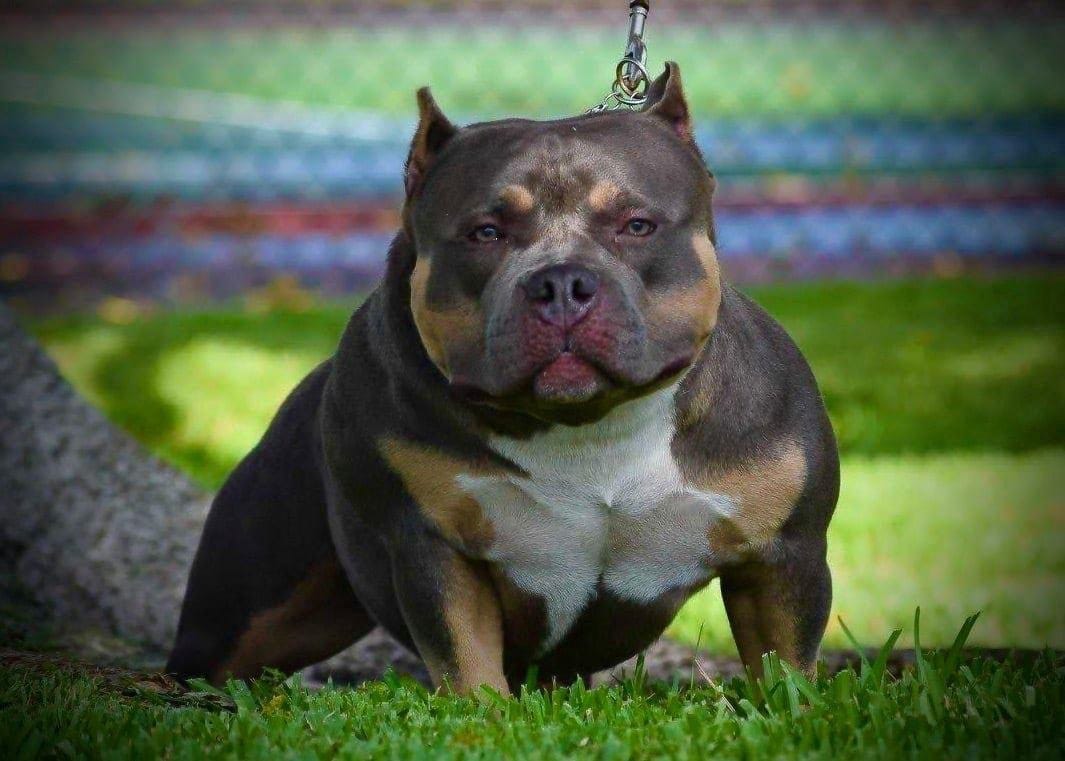
VENOMLINE’S KHALEESI
(Louis V Line’s Venom X Ch Fergie)
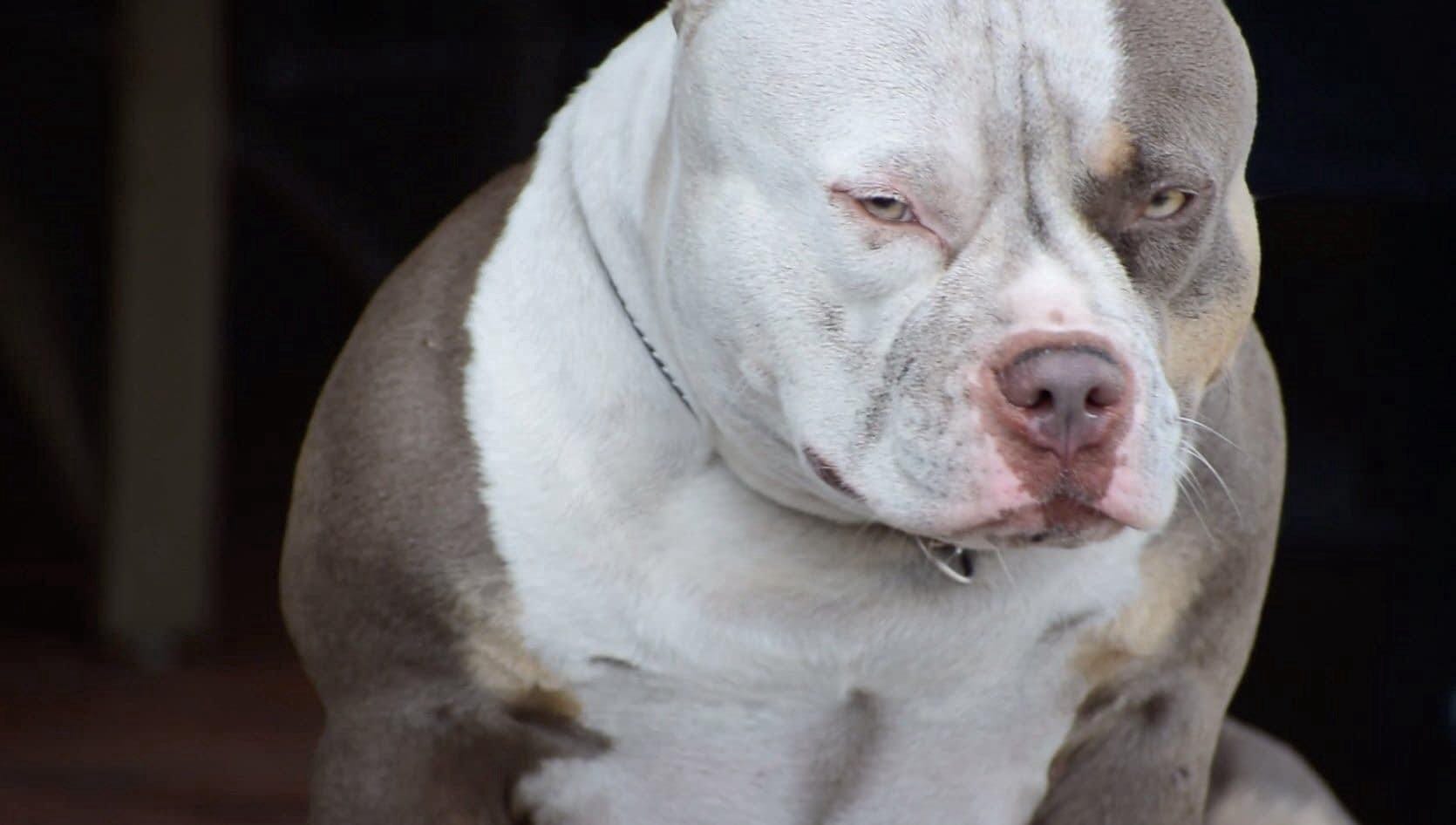
NMG’S LUCY LUCIANO
VENOMLINE’S XENA
(Double L’s Mye-Stro X Venomline’s Khaleesi)
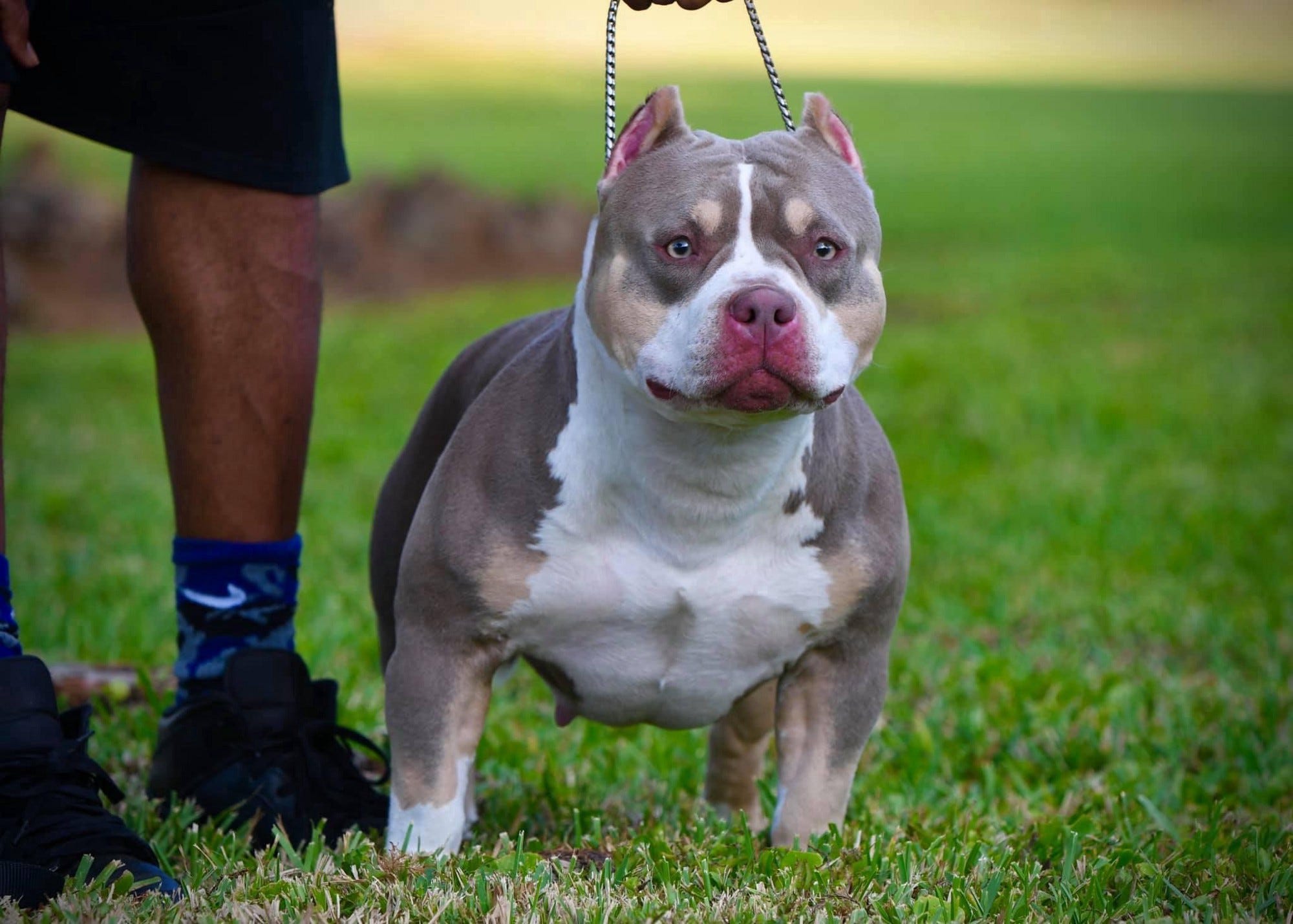
VENOMLINE’S DOLCE
2X Venom ( Venom X Khaleesi)
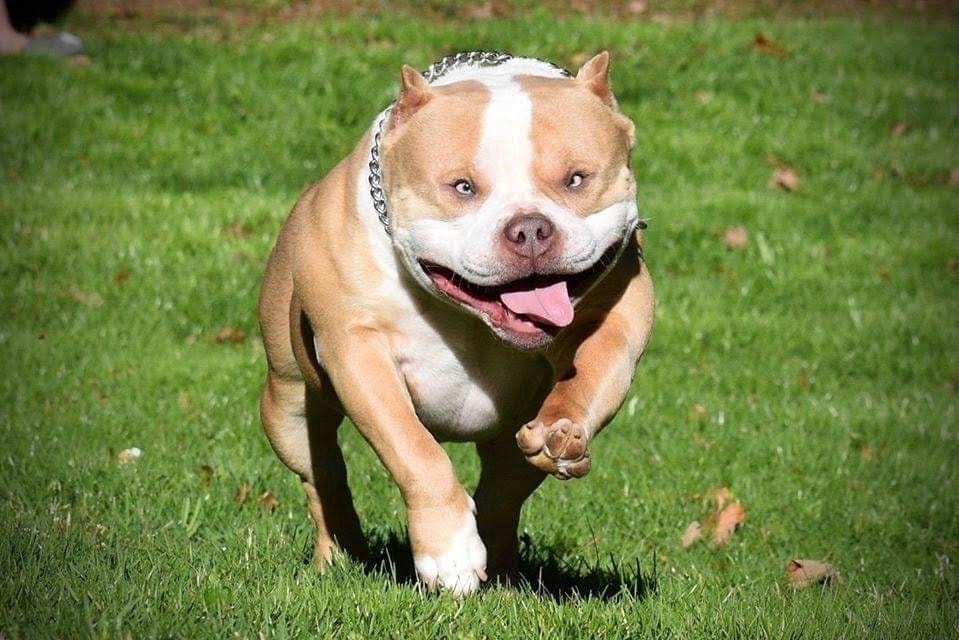
VENOMLINE’S PRINCESS LEIA
(Louis V Line’s Venom X Venomline’s Swizz)
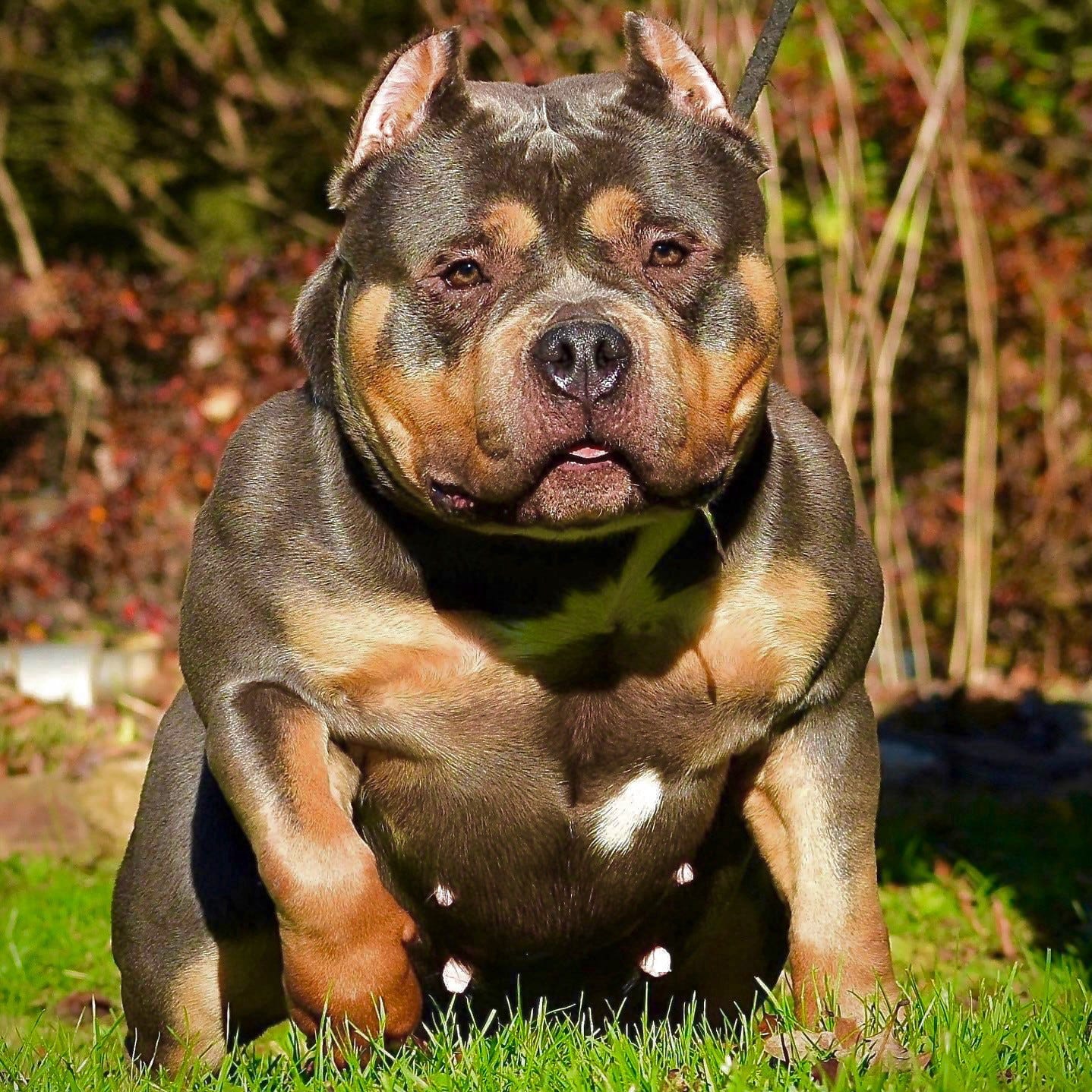
VENOMLINE’S VIXEN
(TLB/Venomline’s King V X Venomline’s Xena)
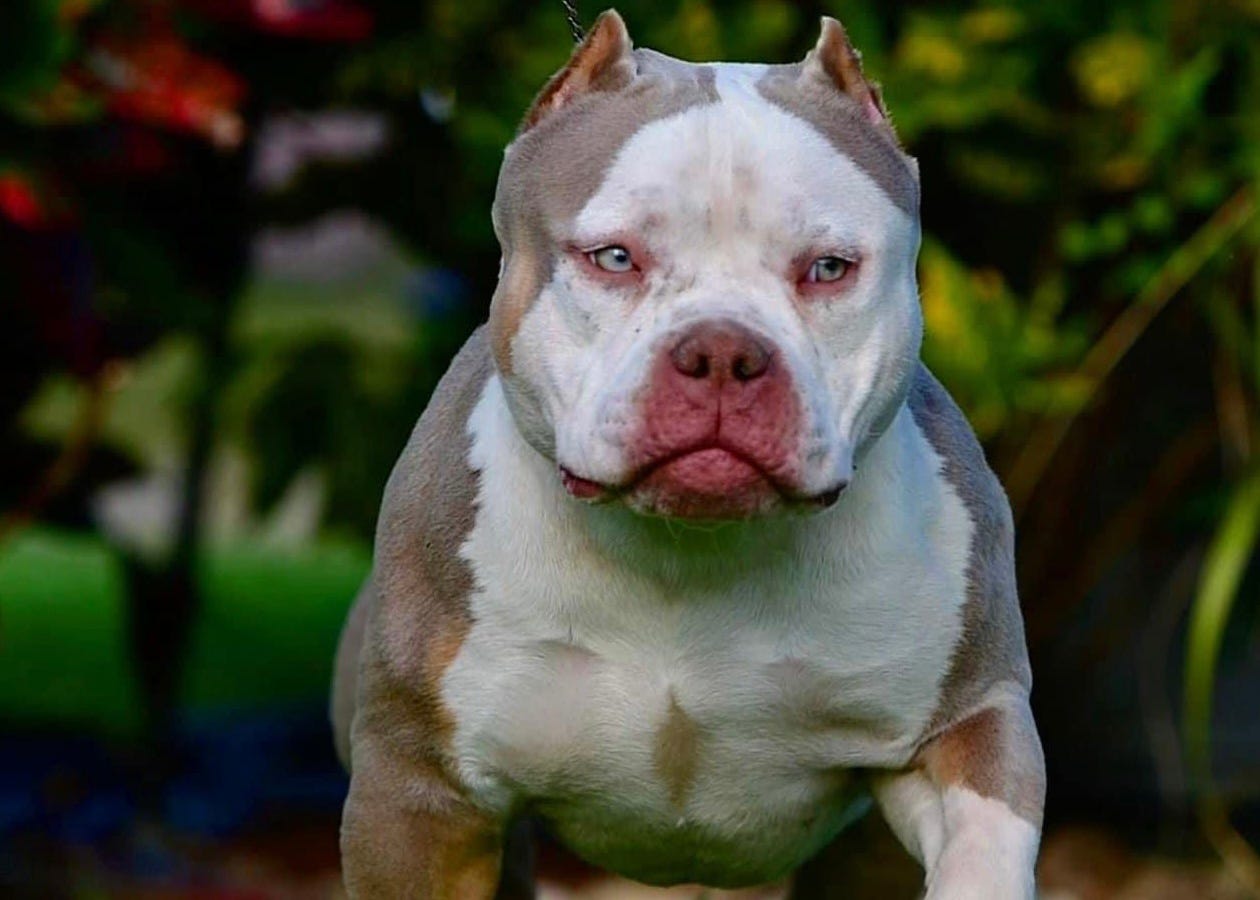
THE FOUNDATION & NEXT GENERATION FEMALES OF VENOMLINE
It’s fairly easy to add mass and Extreme features, what’s not easy is producing it on a complete american bully. One with angulation along with a thick strong rear on a dog that may exhibit extreme traits but is still functional. If a dog can’t run and play, in our opinion.. that’s a failure.
There are not too many kennels that are currently combining the “wow factor” and extreme traits desired in the breed while also producing balanced dogs from head to rear that are fully functional and athletic for the breed and still able to excel in the show ring.
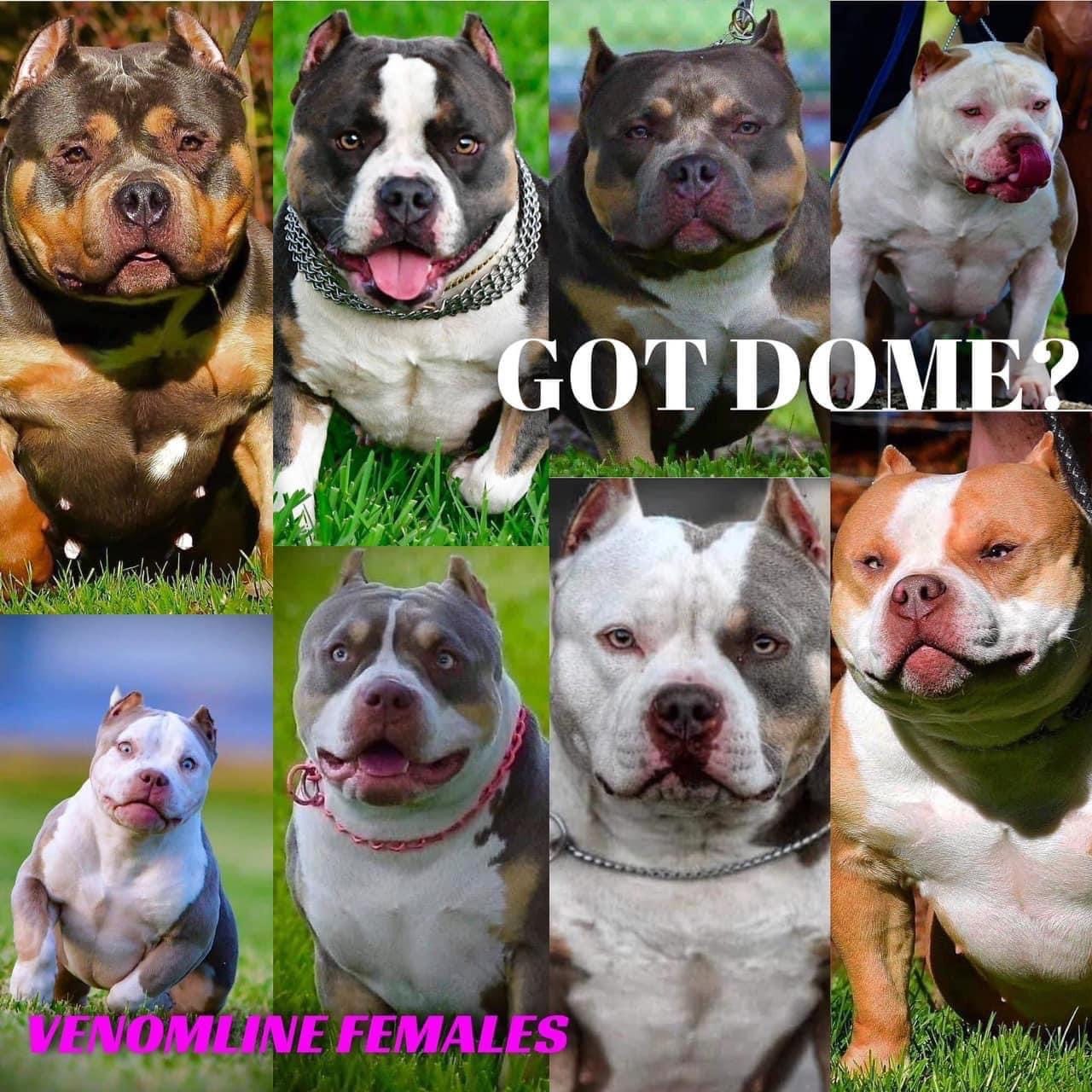
Here you’ll find Foundation Females that are linebred to produce.
The result can be seen in our productions
VENOMLINE POCKET BULLIES LITTERS
Check out our previous litters in the playlist below:

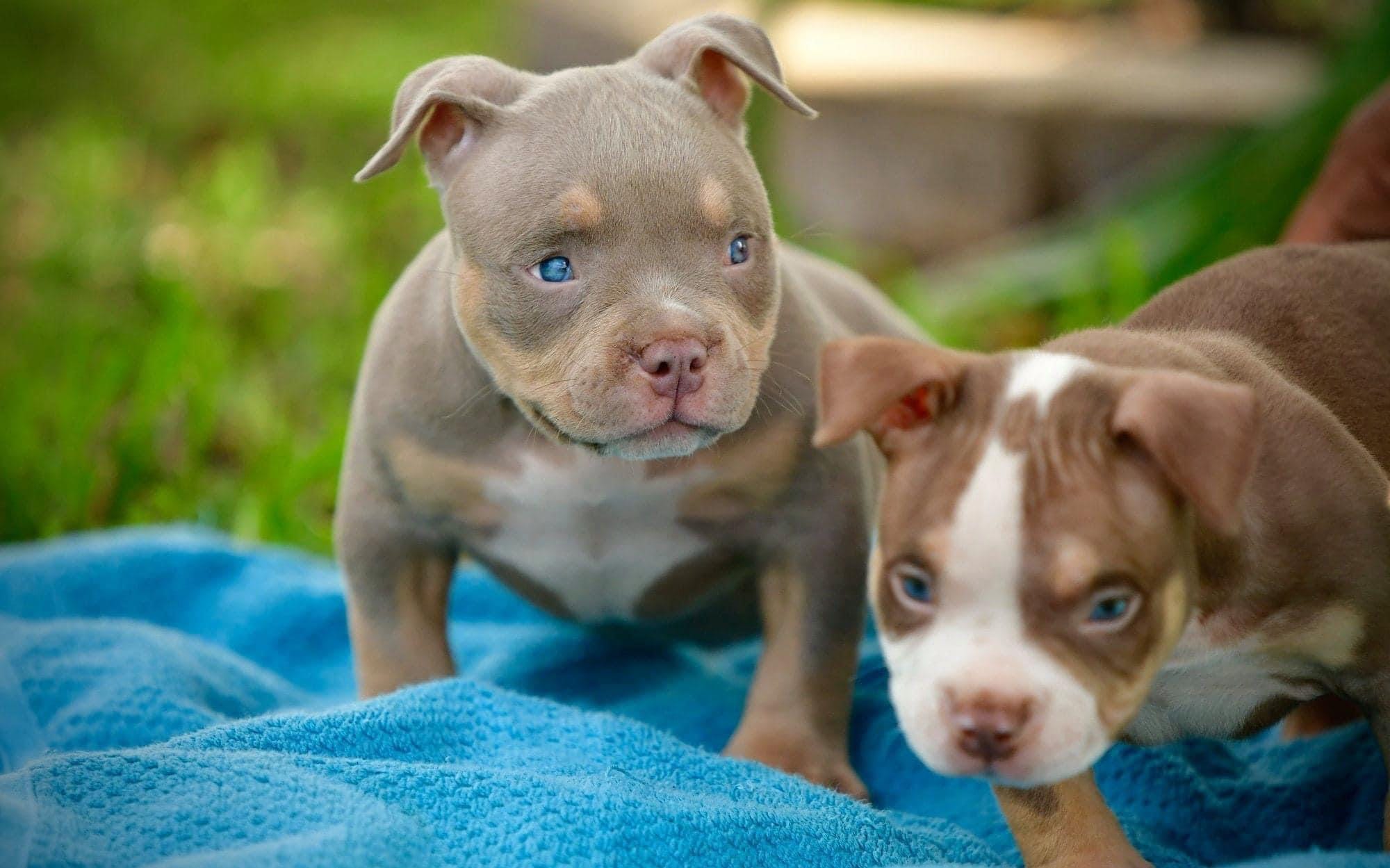
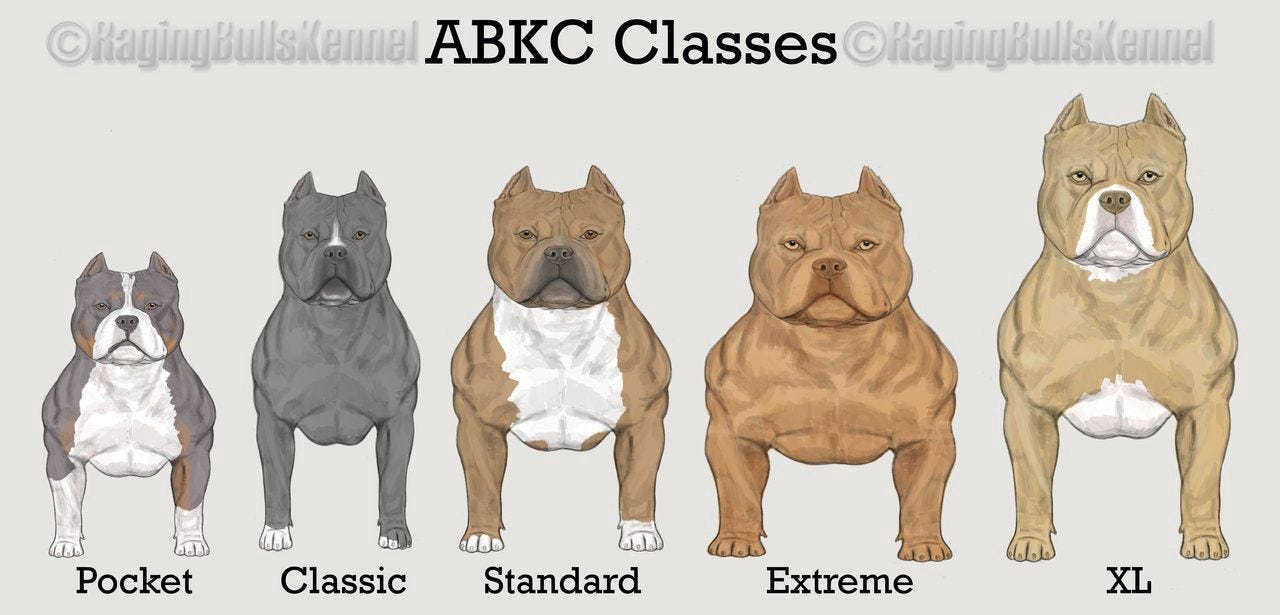



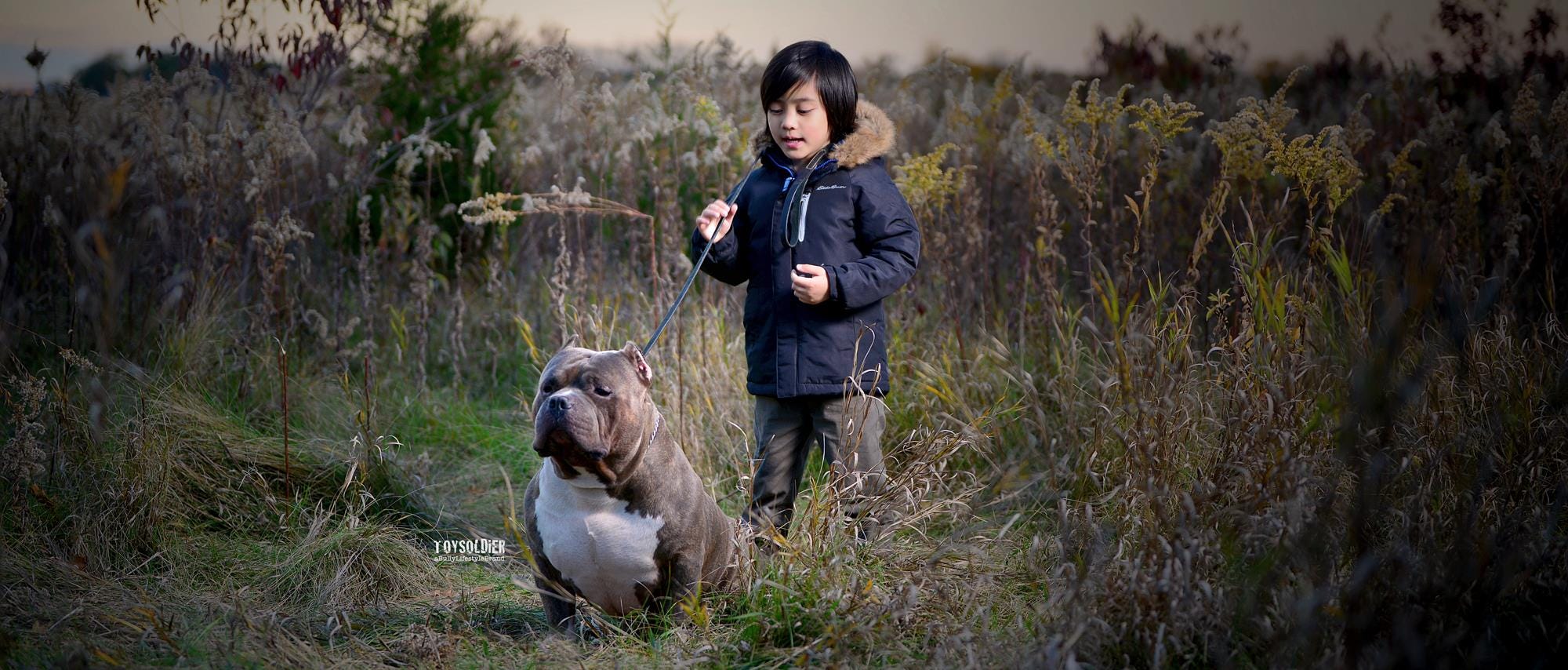
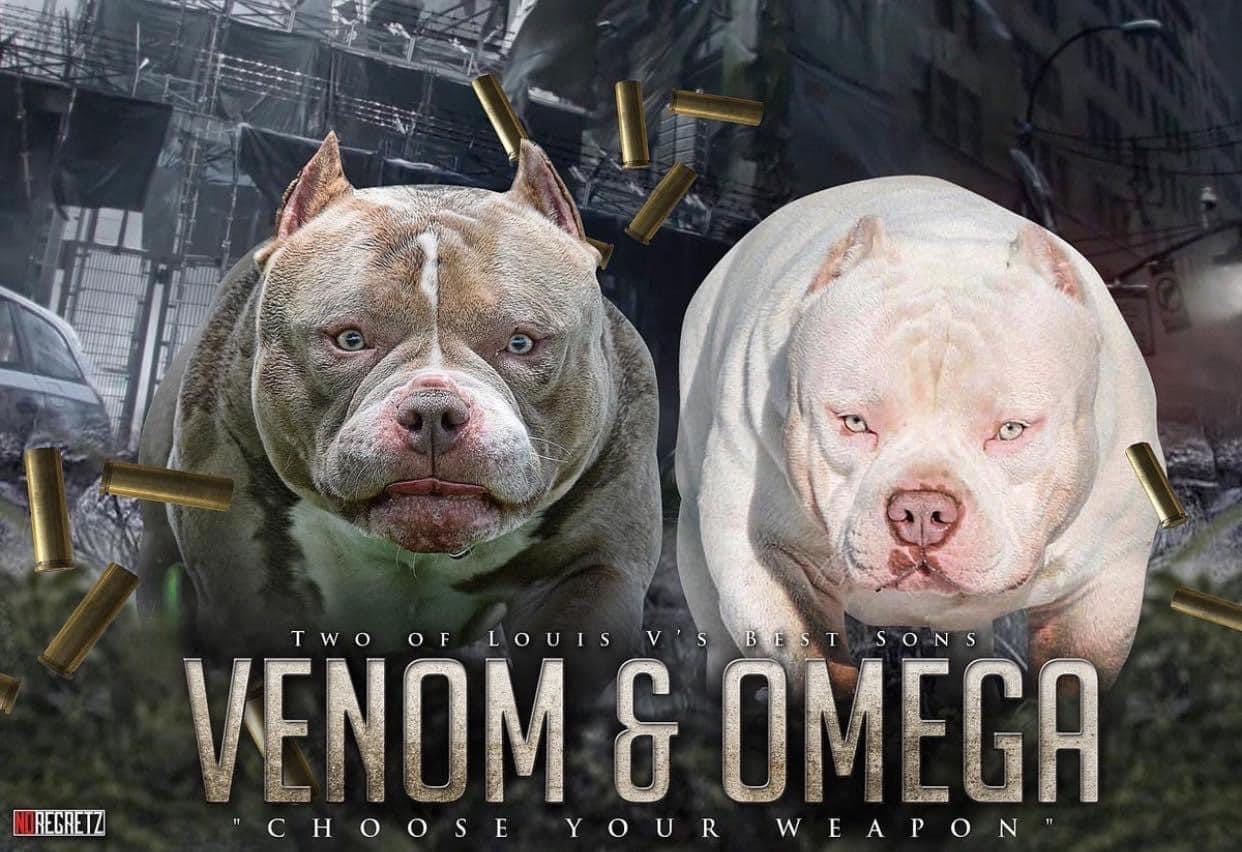
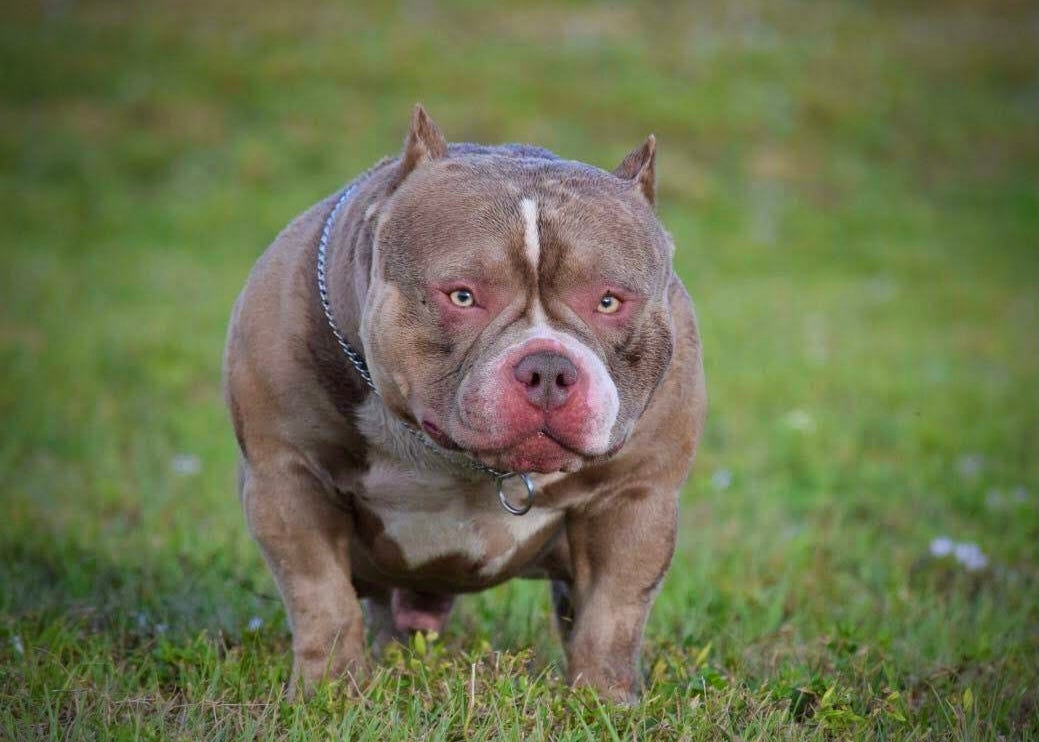
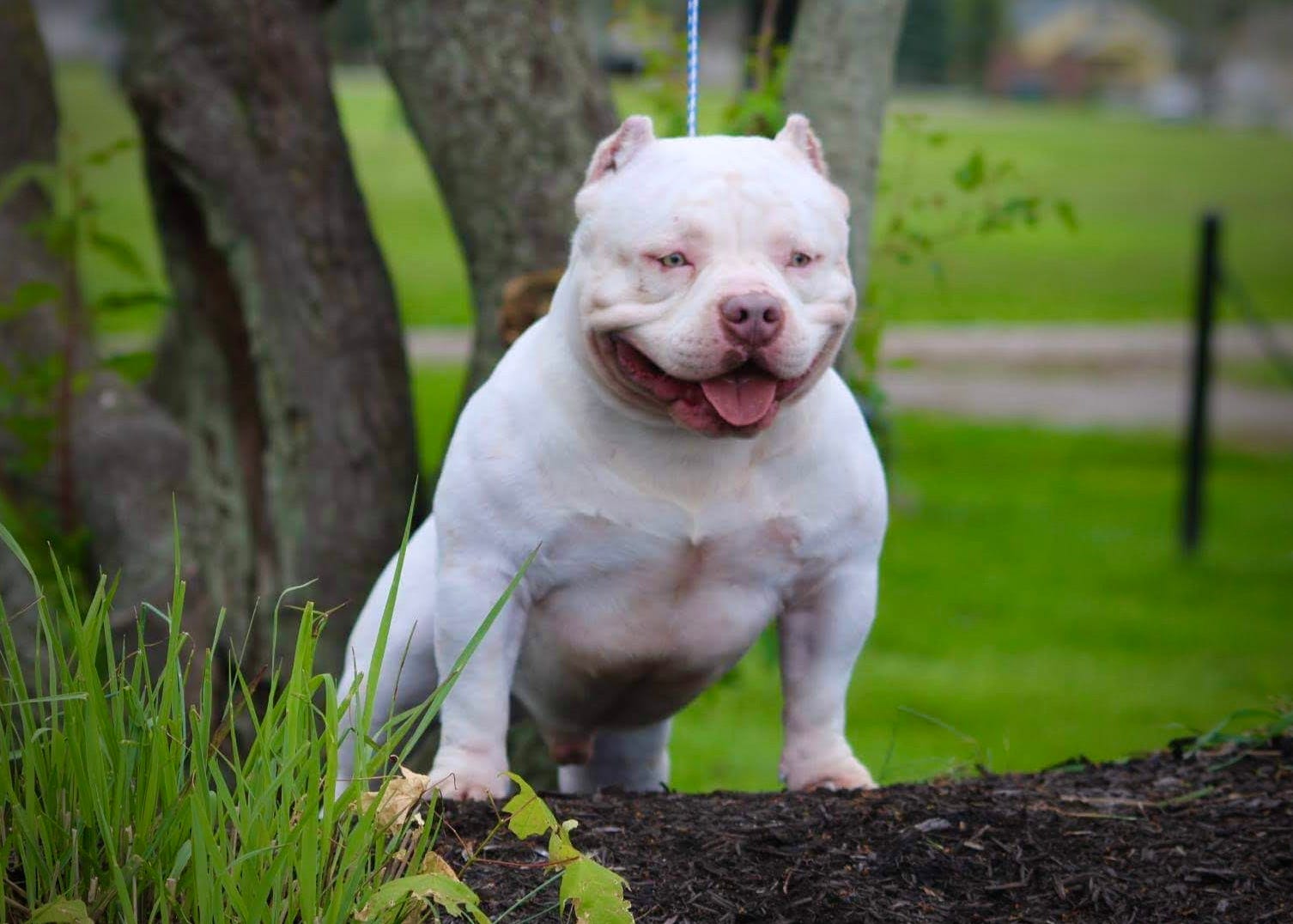
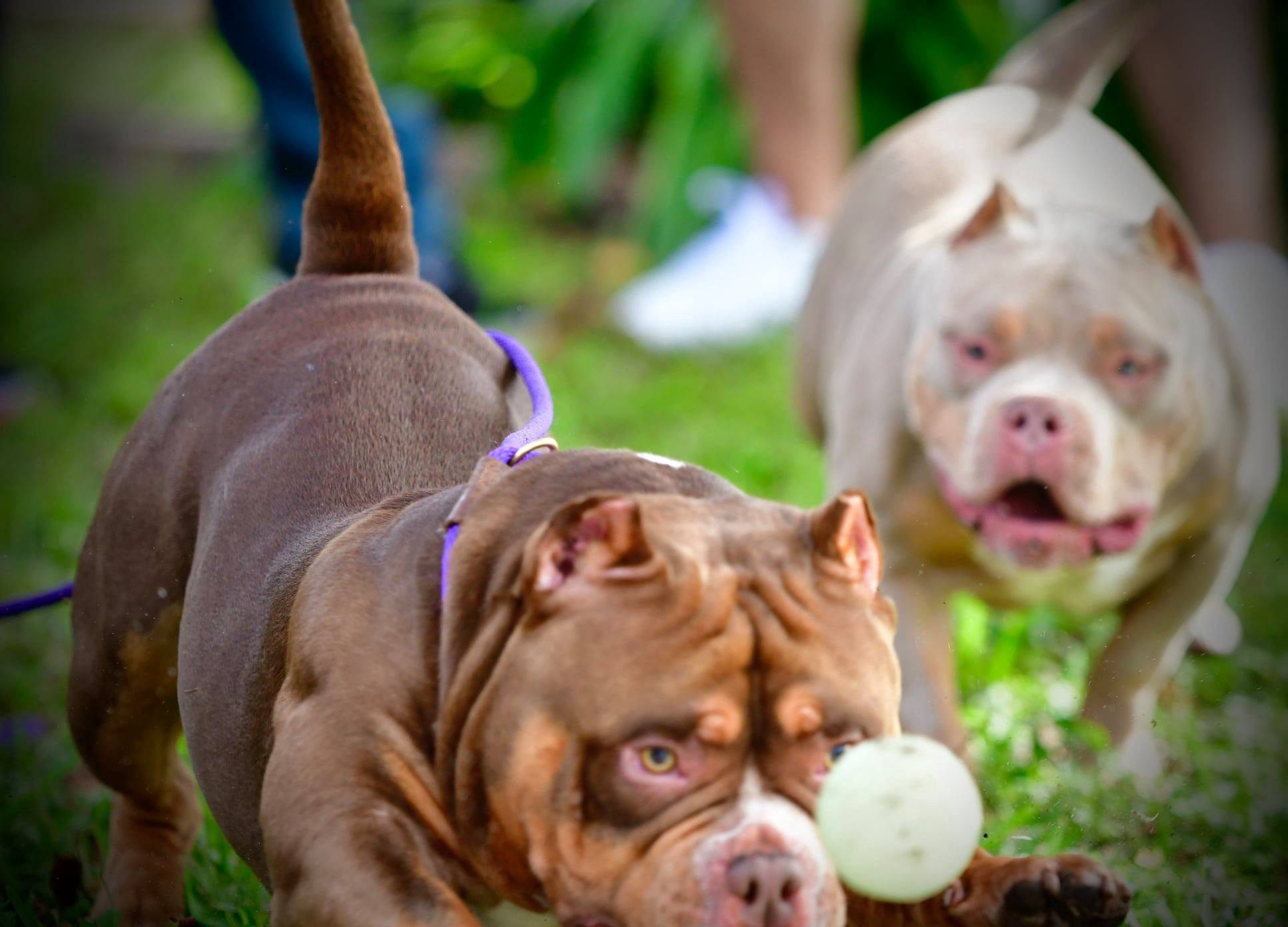
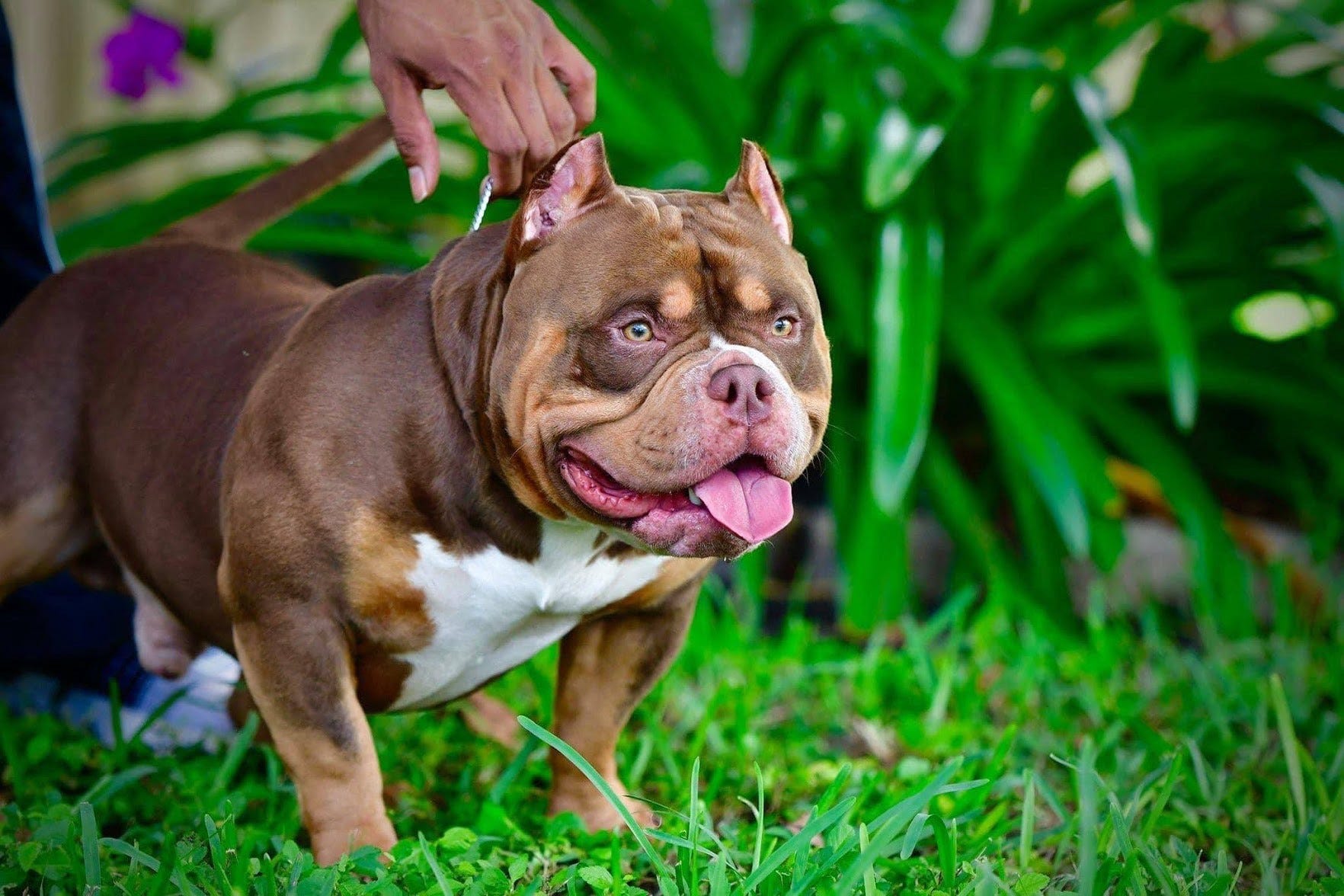
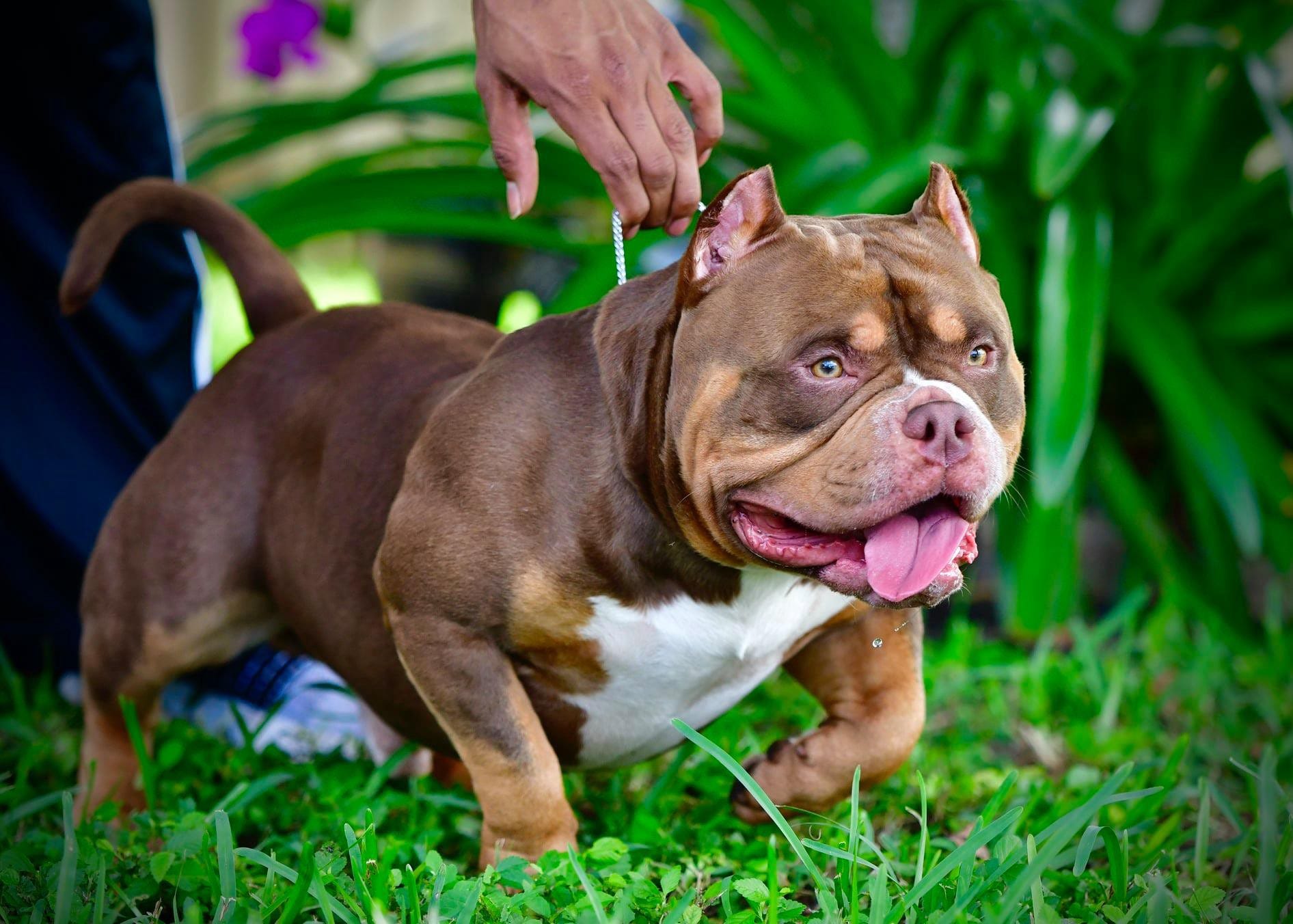
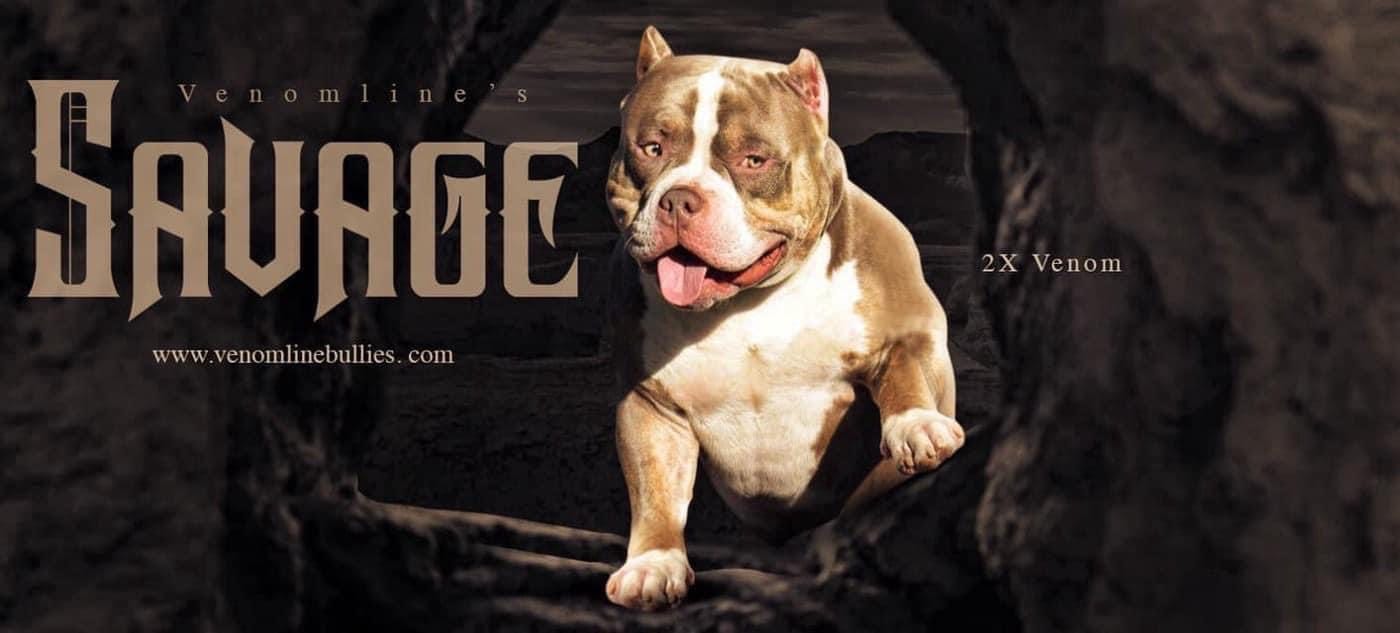

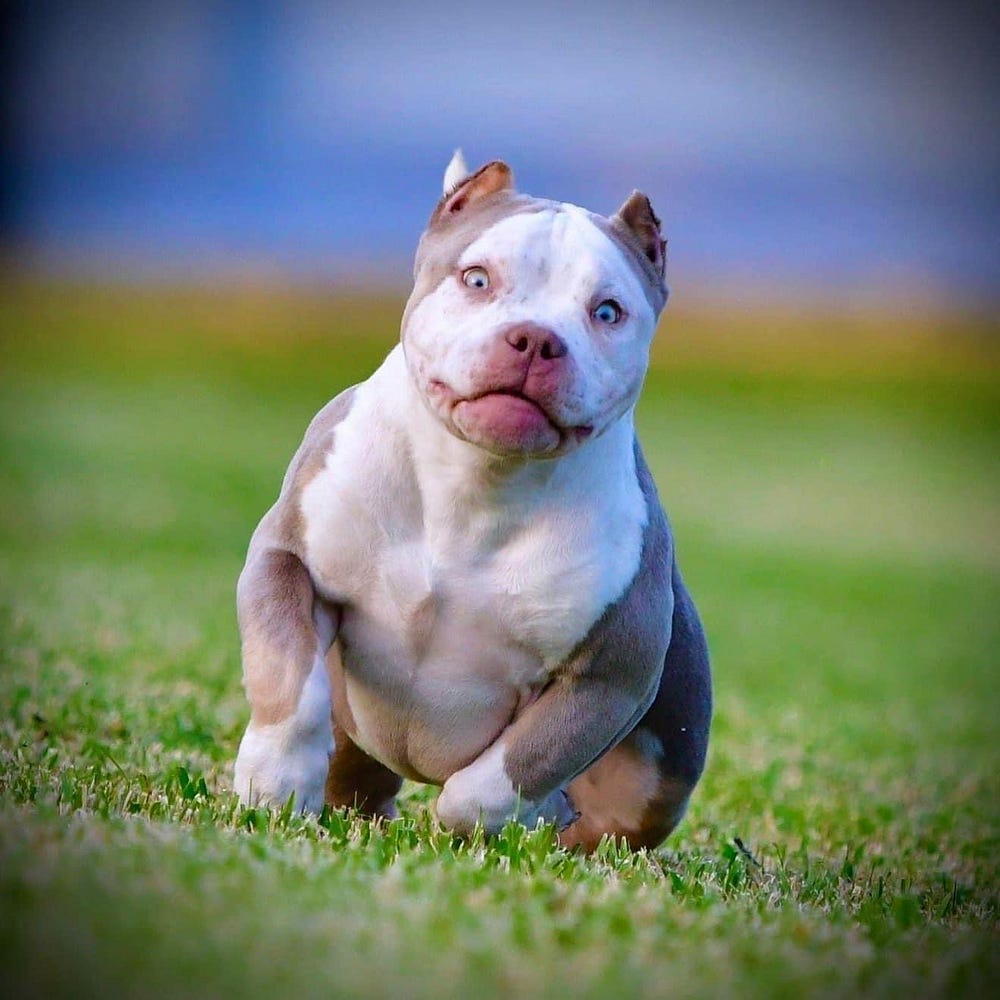
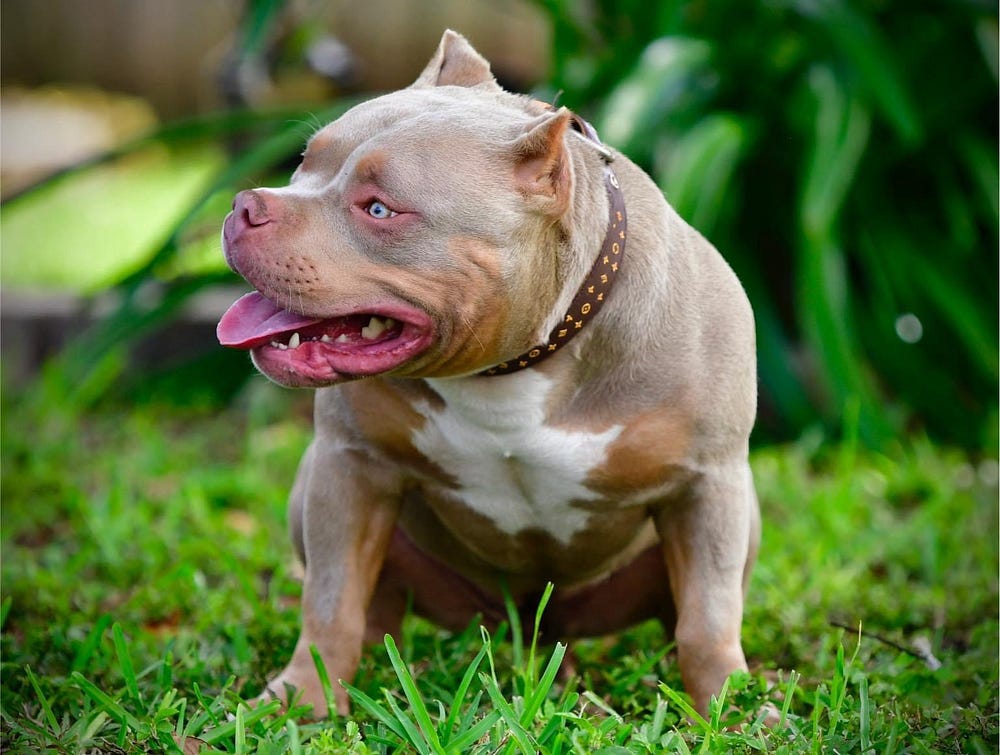
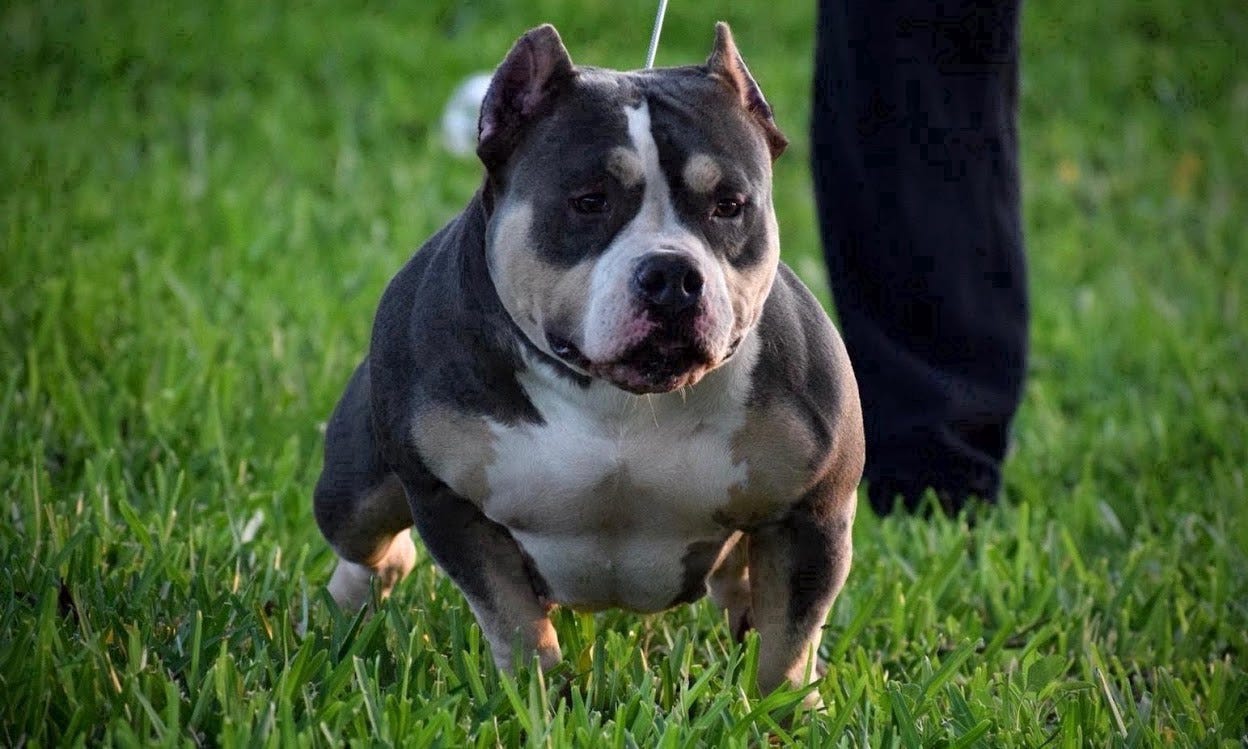



Comments
0 Comments